MicronesiaMap
September So here’s how it works. You start with some corals. In this case, they’ve been loaded onto a wonderful raft made from plastic plumbing pipe. 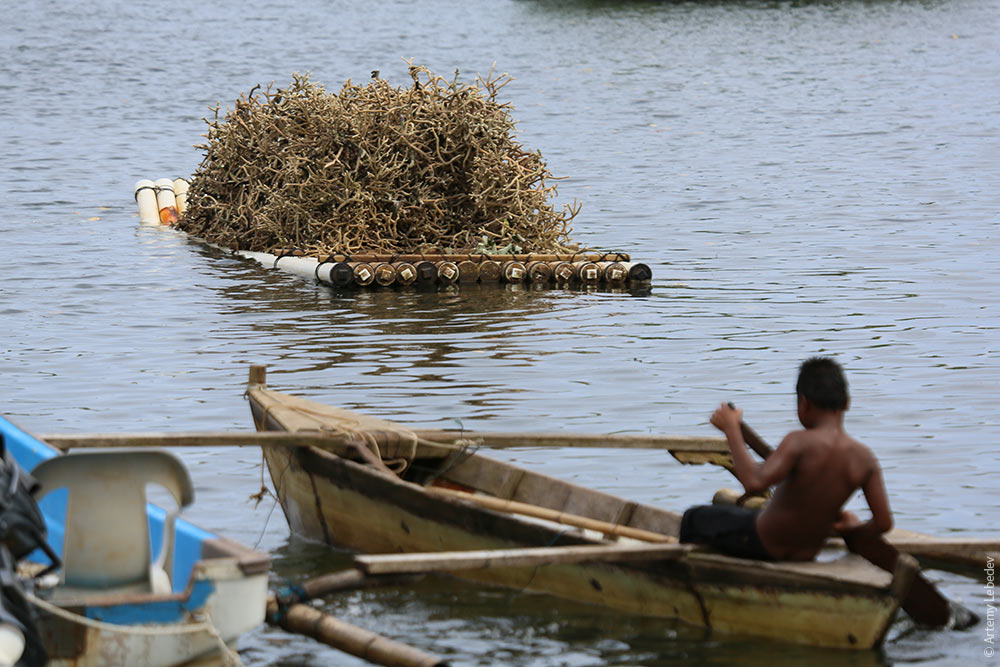 The corals are picked through. Broken down into small pieces. Sorted into baskets. 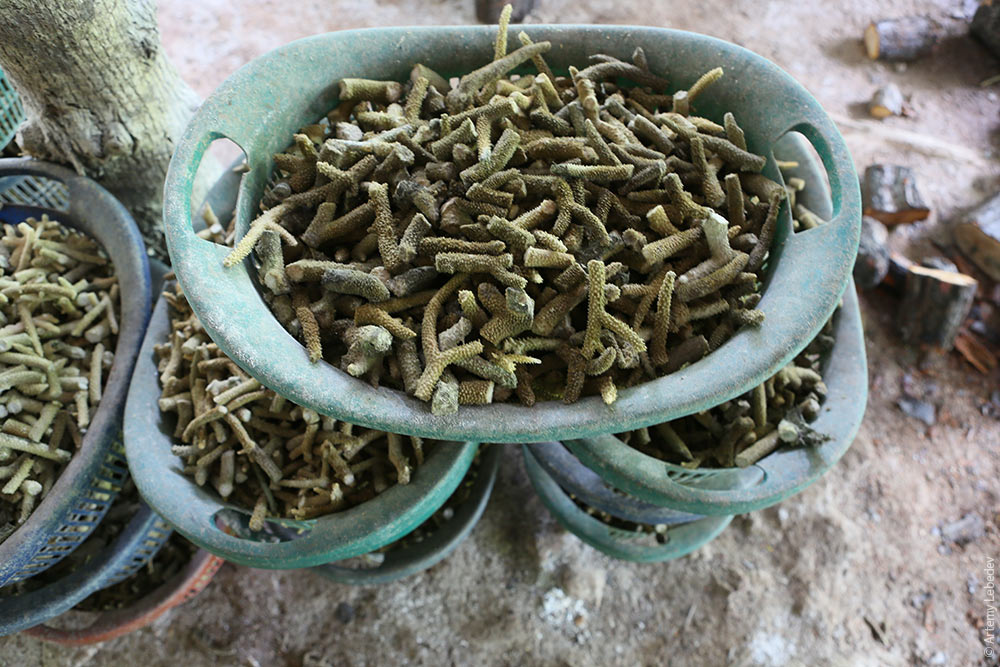 Then they’re placed in a fire for twenty-four hours. In that time, the corals turn into white ash, which collects in the bottom of the hearth. 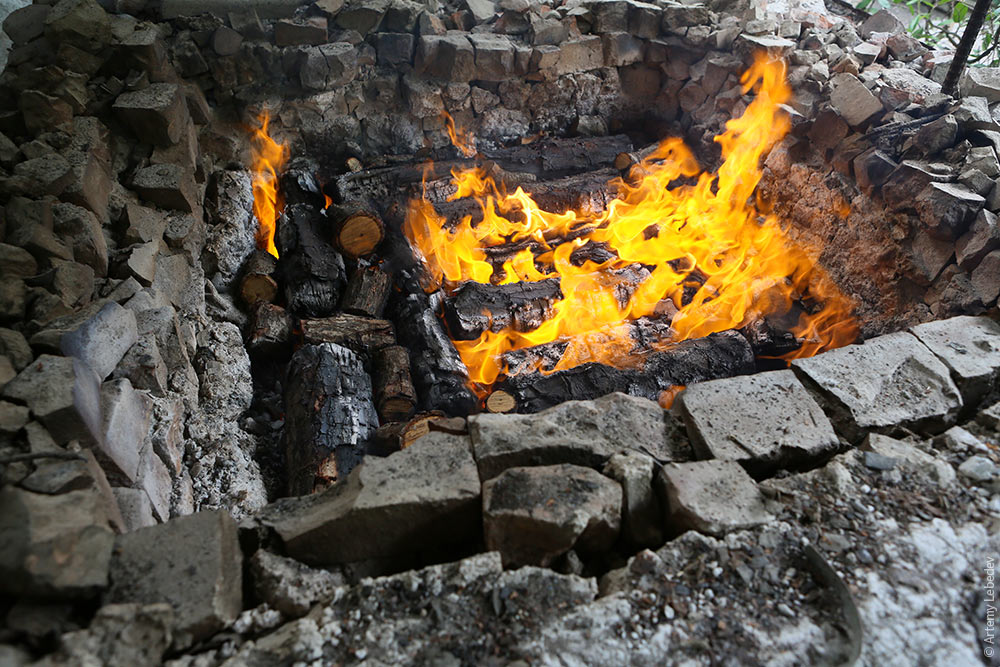 This ash is then sifted, first through a coarse screen. 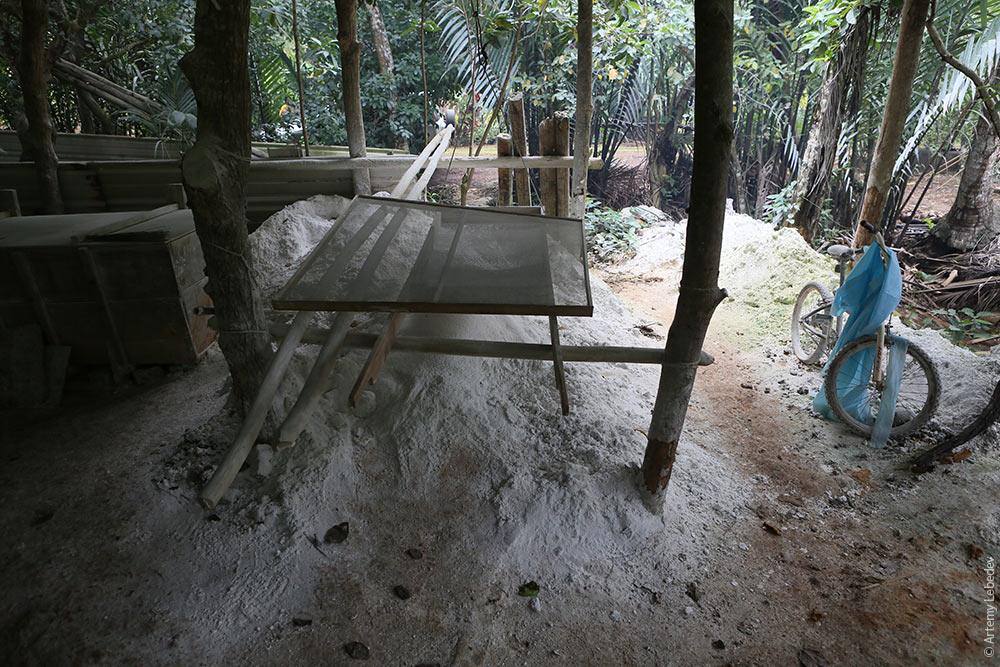 Then through a drum with a fine screen. The resulting product is almost like talcum powder. 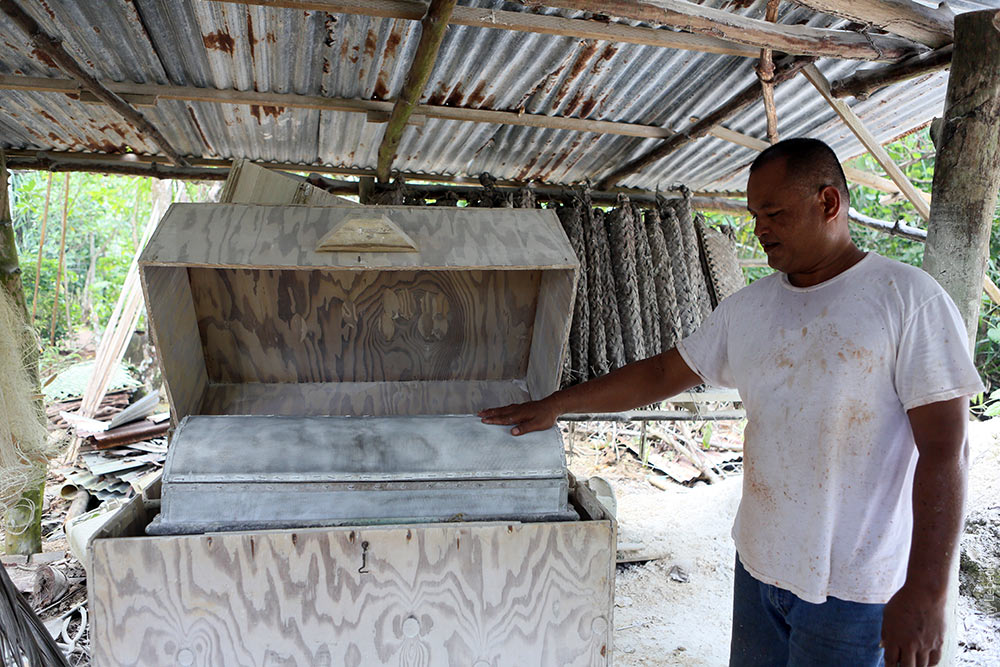 The leftovers are discarded and used as garden fertilizer. 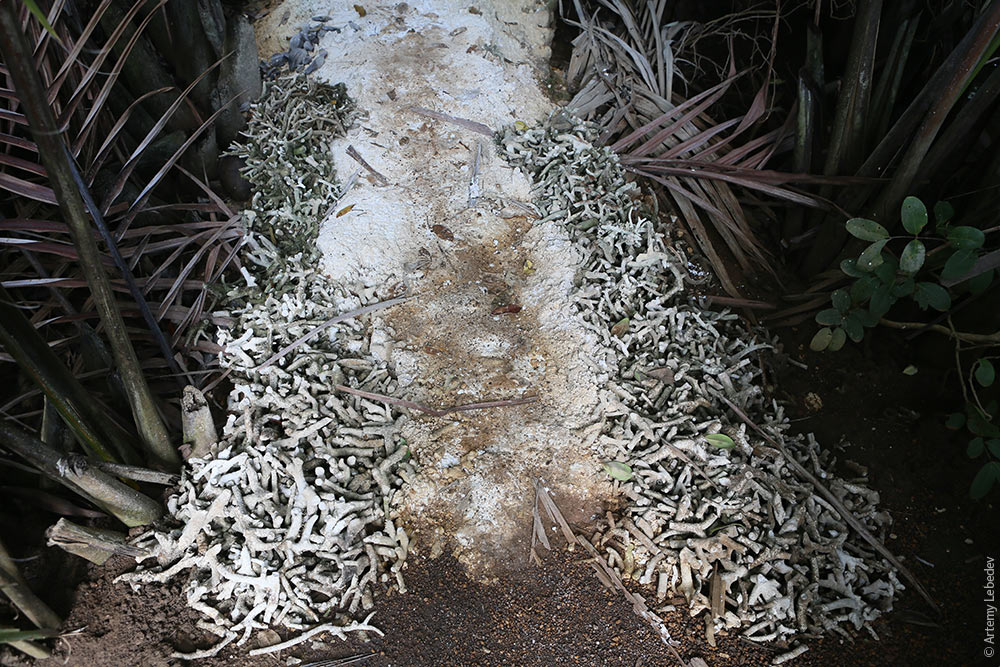 The powder is packaged into bags and sold for a couple of dollars a pound. This is lime, or calcium hydroxide. Every Micronesian always carries around a bottle of lime. It’s usually kept in a woven purse. Or simply a plastic bag. 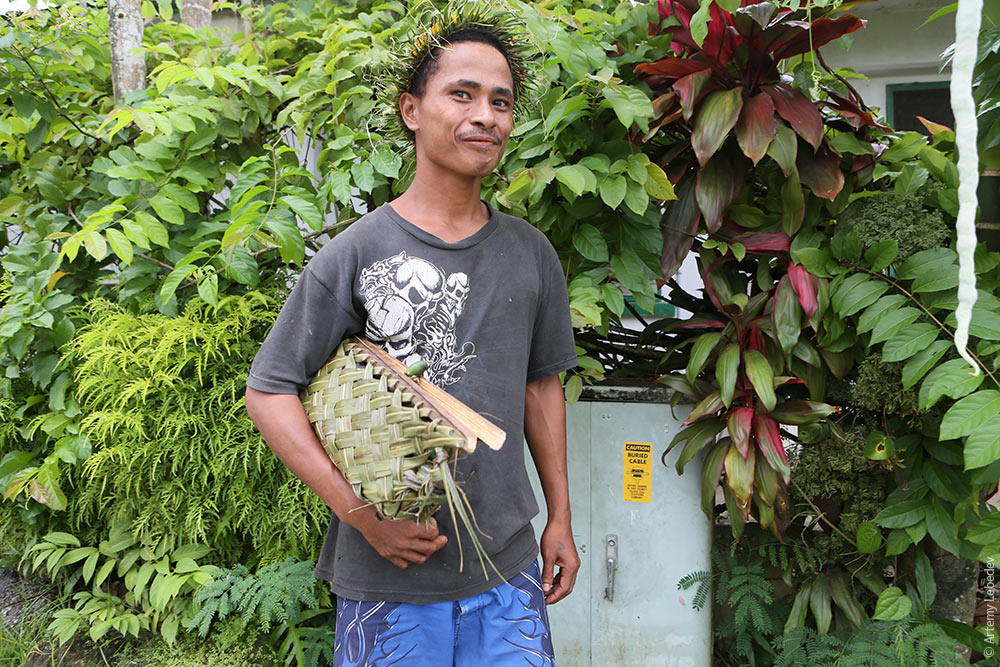 And now for the recipe. You’ll need some betel nuts, pepper leaves, and coral powder (in a bottle, to keep it from getting damp). The green jar contains chunks of cigarettes. 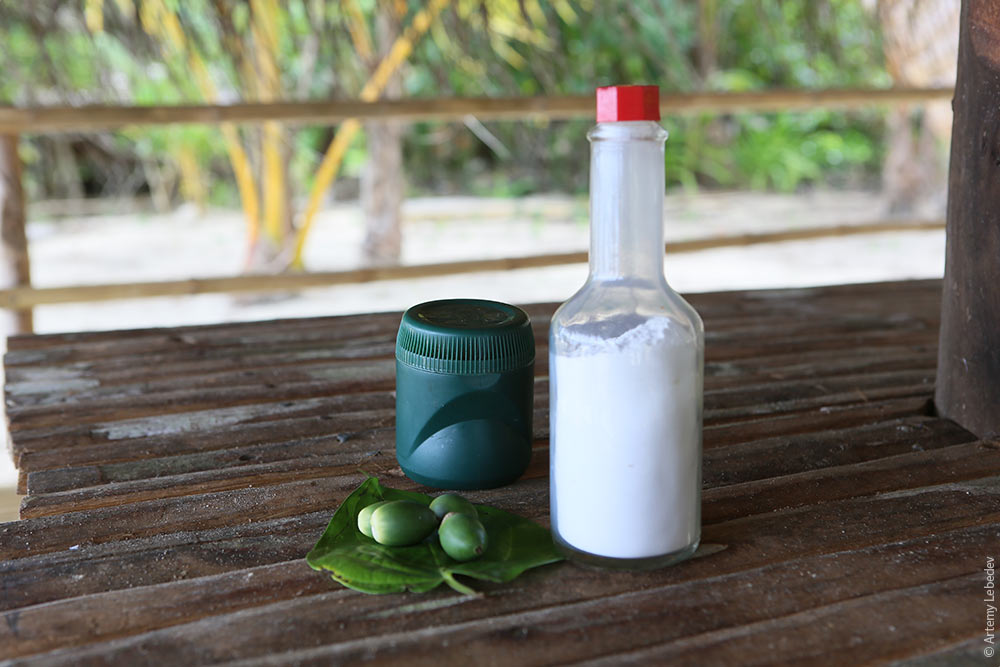 Wrap one betel nut in a pepper leaf and sprinkle it with lime (you can also break open the nut and sprinkle the lime inside). Some people also throw in a cigarette chunk for added effect. 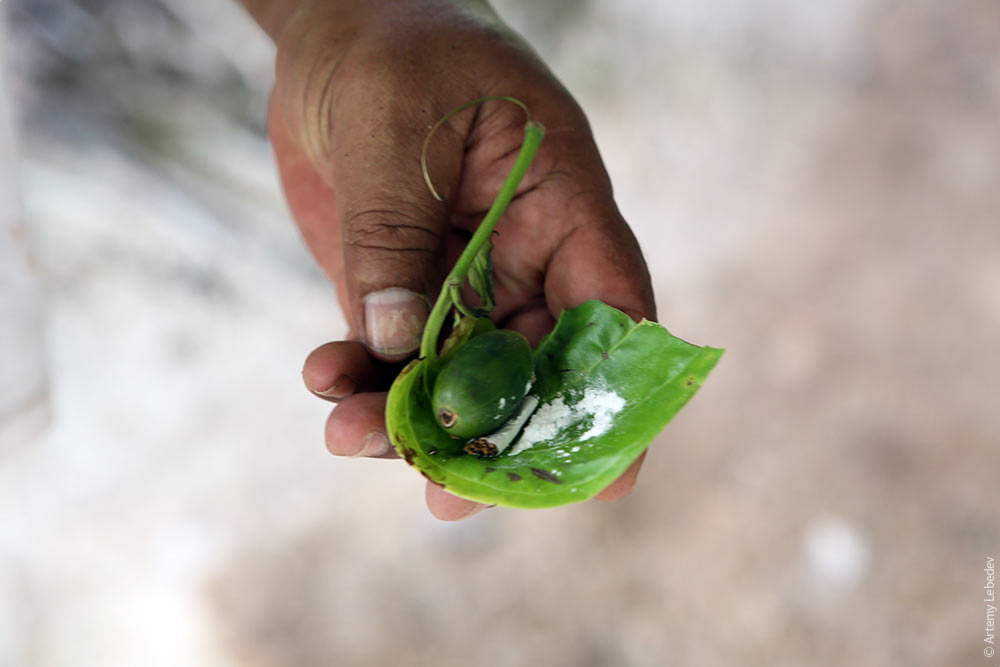 And now chew. Mmm, delightful. The main thing is not to overdo it with the coral, or it begins to burn your mouth. 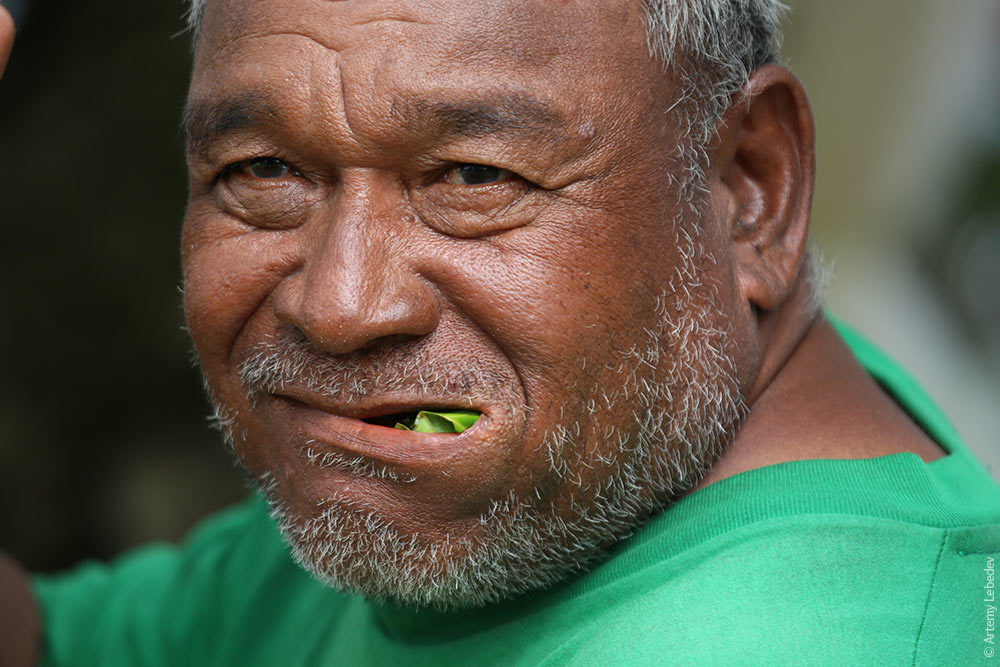 Betel stains the mouth a distinctive red color and the teeth black. 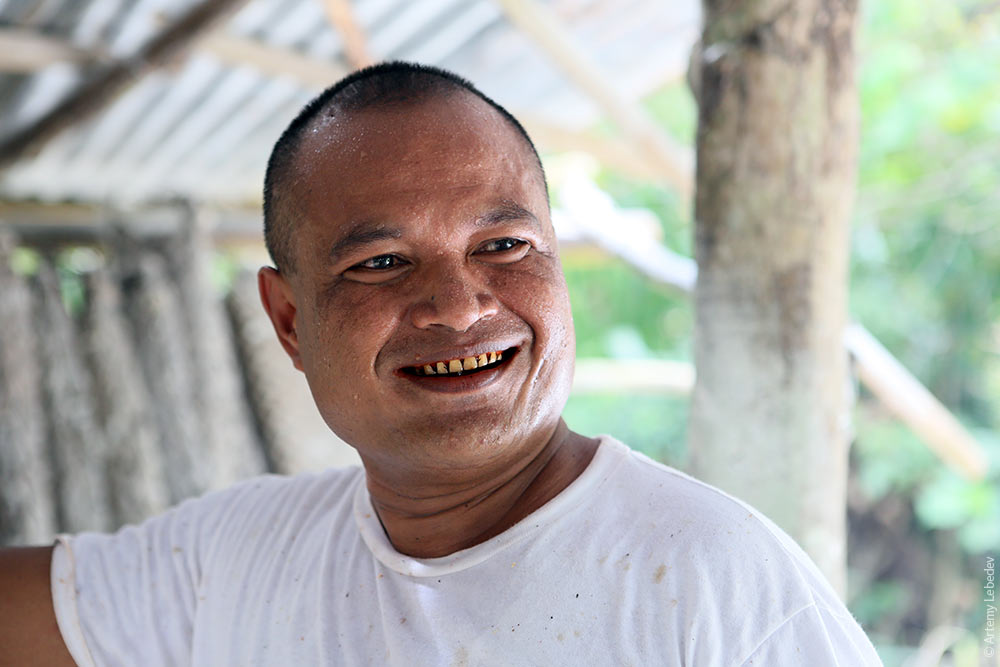 Everyone chews it. 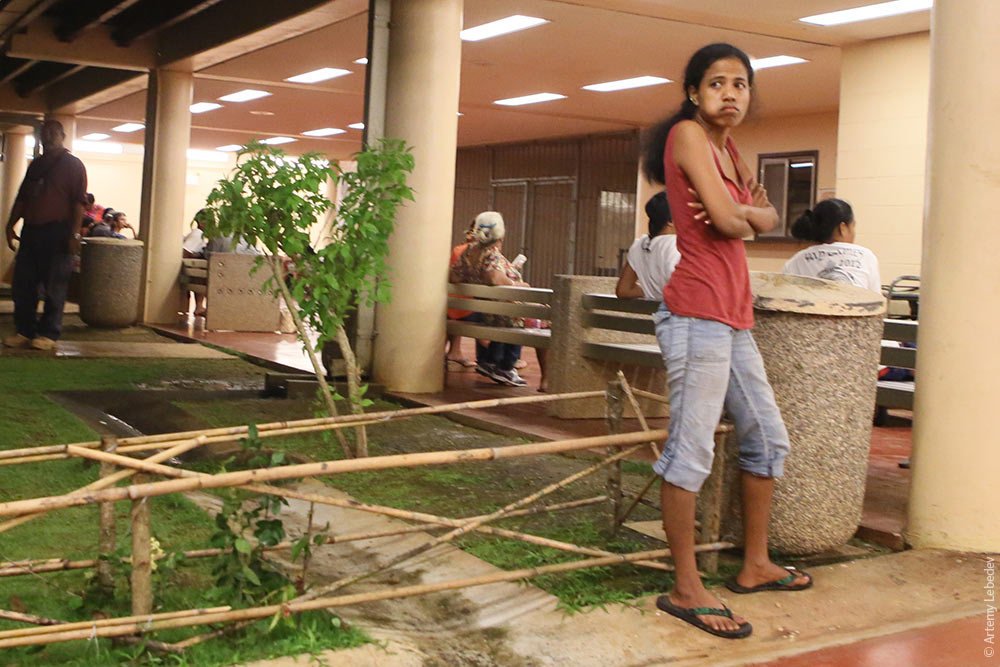 Every child sports a bulging cheek. That’s betel. 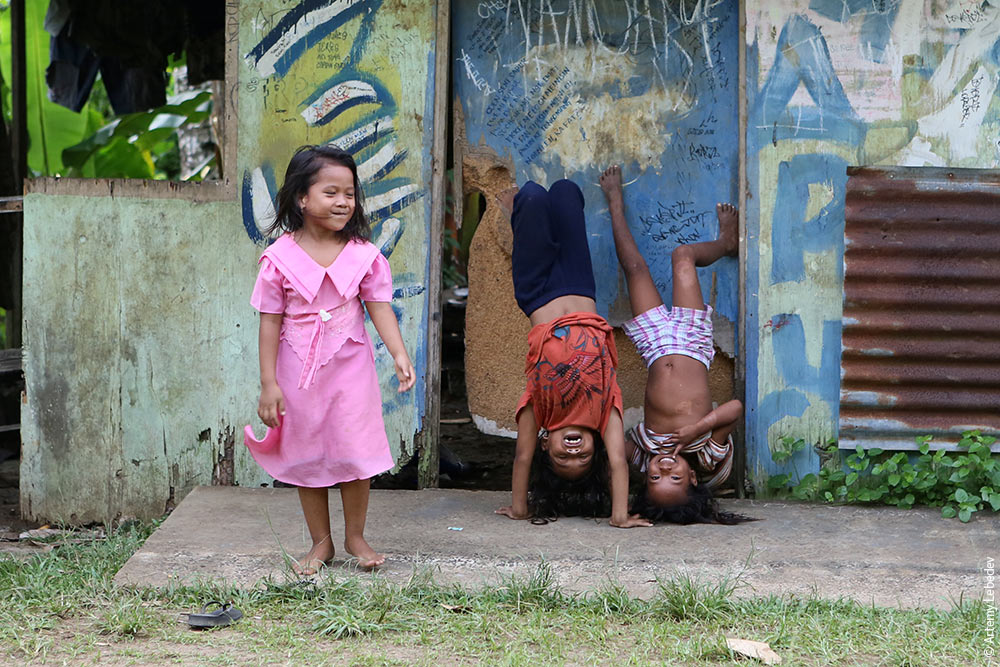 Those who add tobacco are constantly spitting because of the bitterness. The entire country is covered with gobs of red spit. Stores put up signs asking people not to spit nearby. 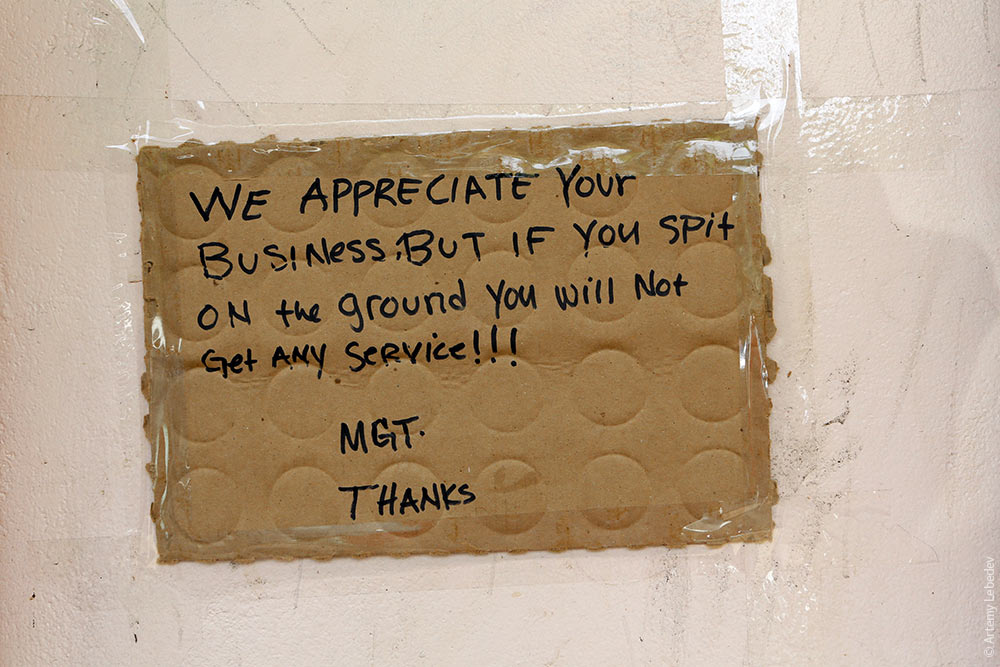 In civilized places, people try to spit only in the trash cans, hence the sign asking you to lift the lid before spitting—no one wants to see that stuff. 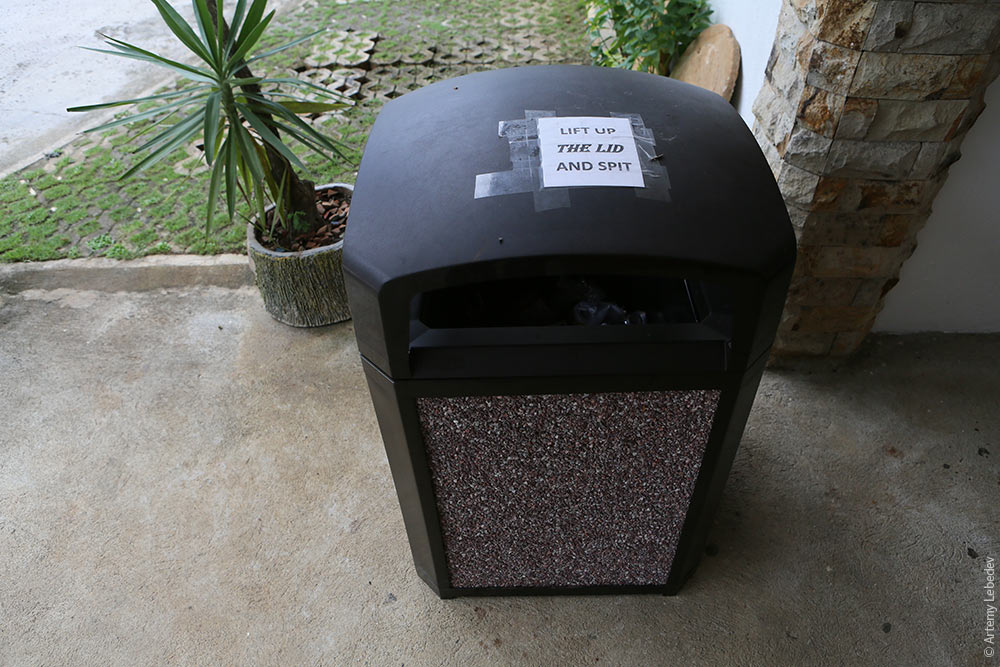 Betel is a soft drug with calming and relaxing properties. It’s consumed in many other places as well (see Taiwan or Bhutan, for instance). I tried it, but didn’t experience the effect: it takes a couple of days to work up to it. Pohnpei StateMapThose entering the tourism office are treated to a lovely sight: a Micronesian resting. 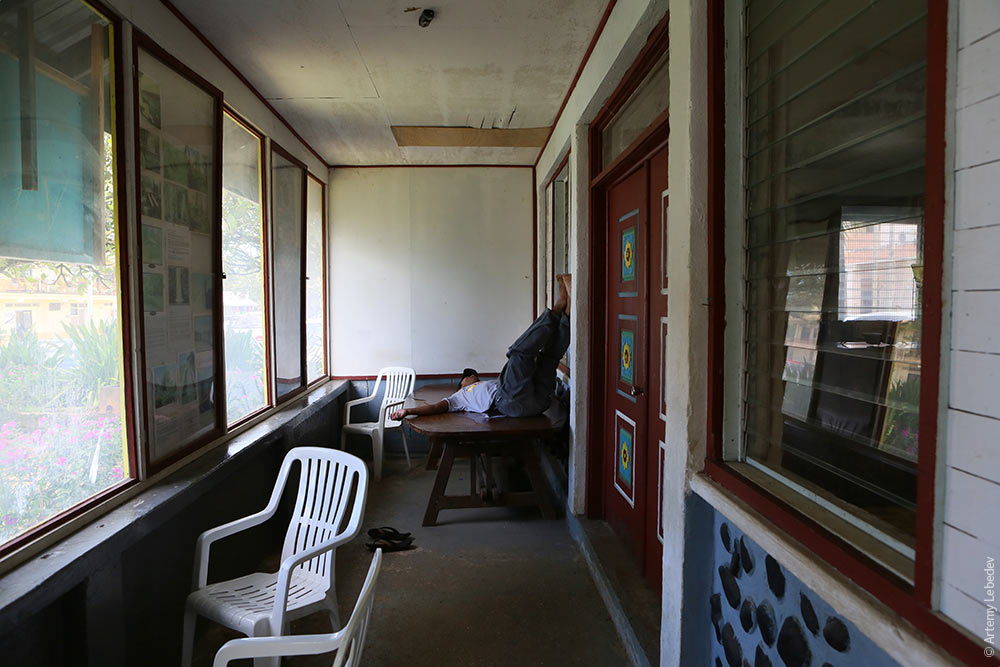 Someone is grilling. 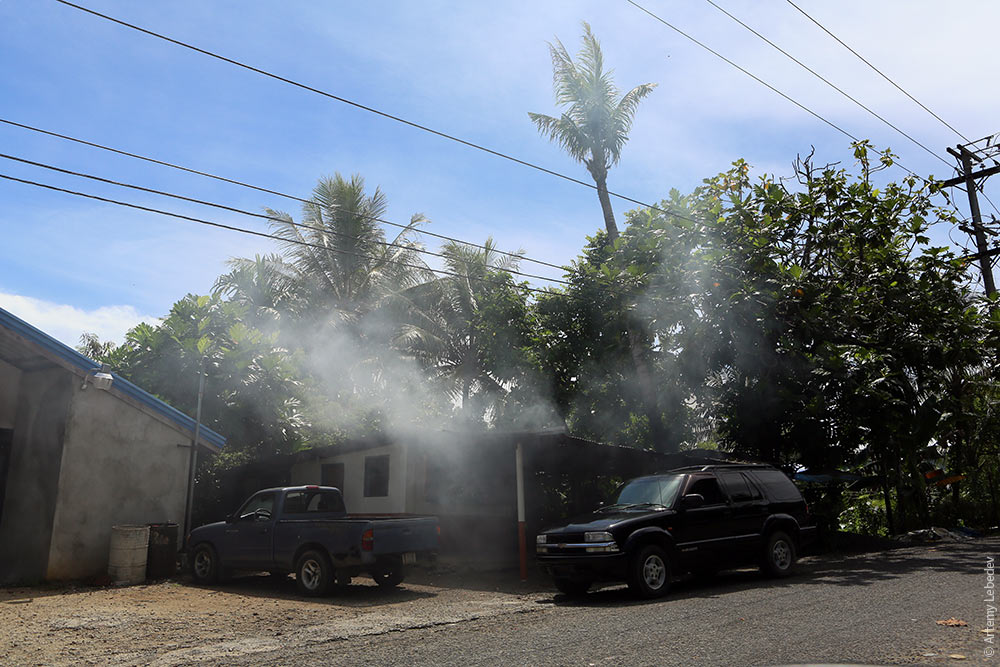 The island’s trash cans consist of empty fuel barrels. 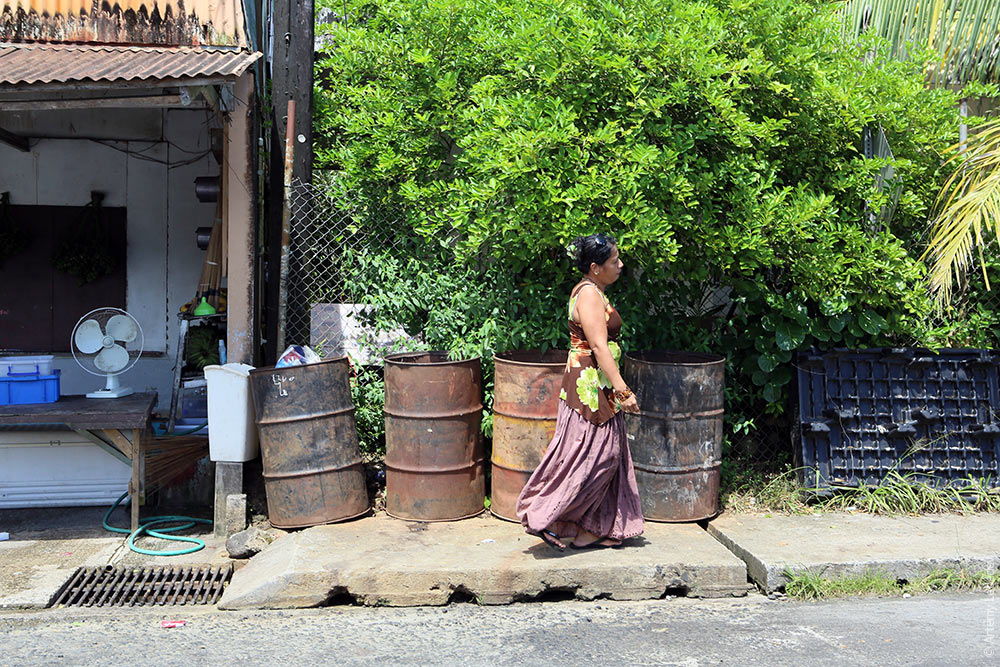 A Pohnpei hydrant. 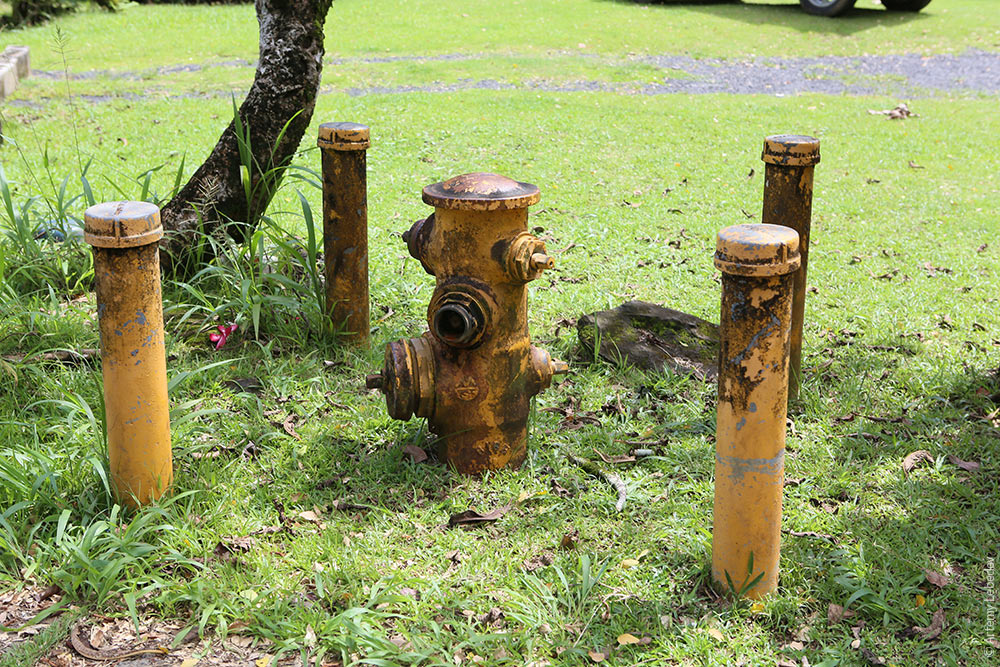 The state’s license plate. 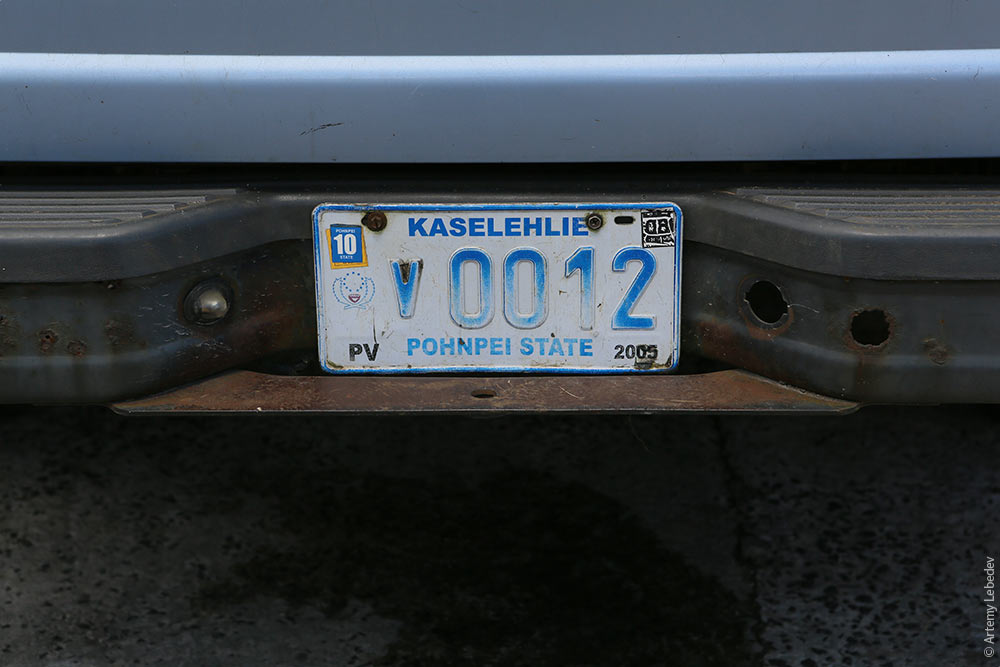 An example of local architecture. 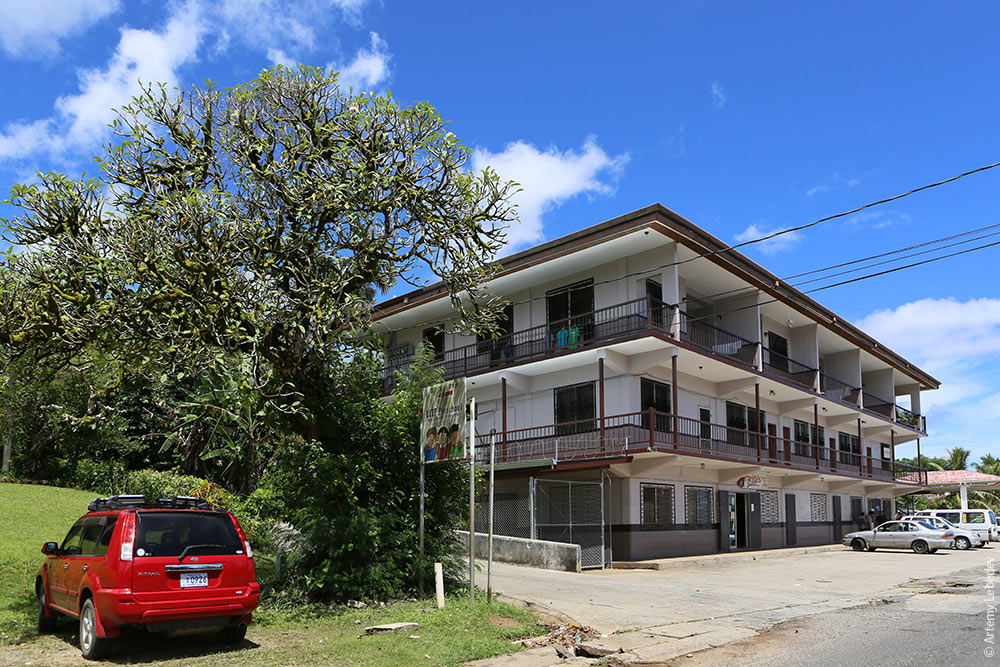 The typical “children” sign features two stooping old ladies with purses. Like all the other traffic signs on the islands, this one is from the US. 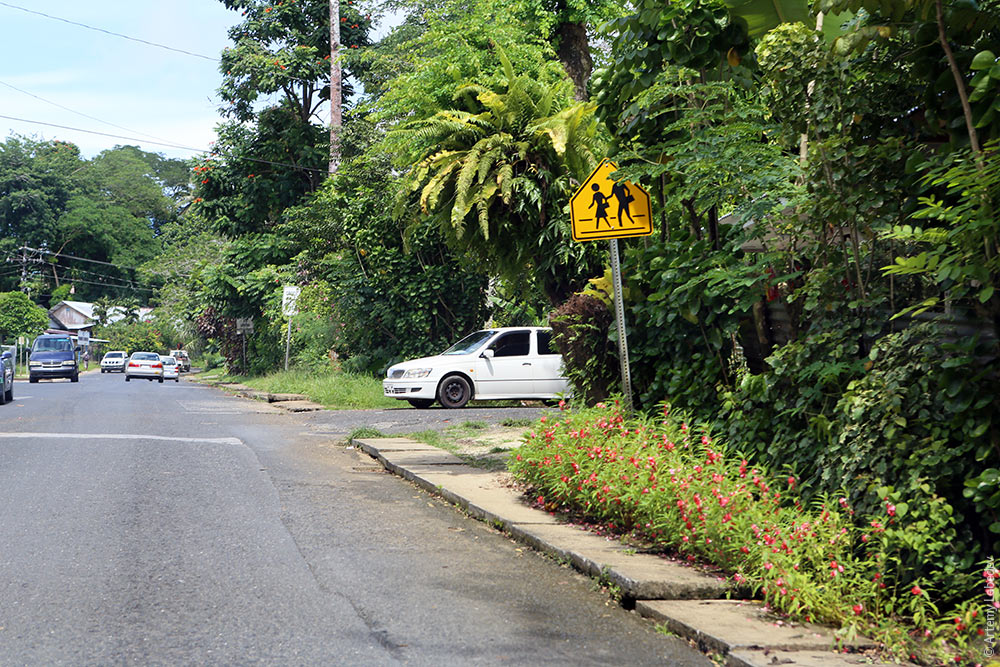 The “problem tree.” An ad aimed at preventing teen pregnancy. 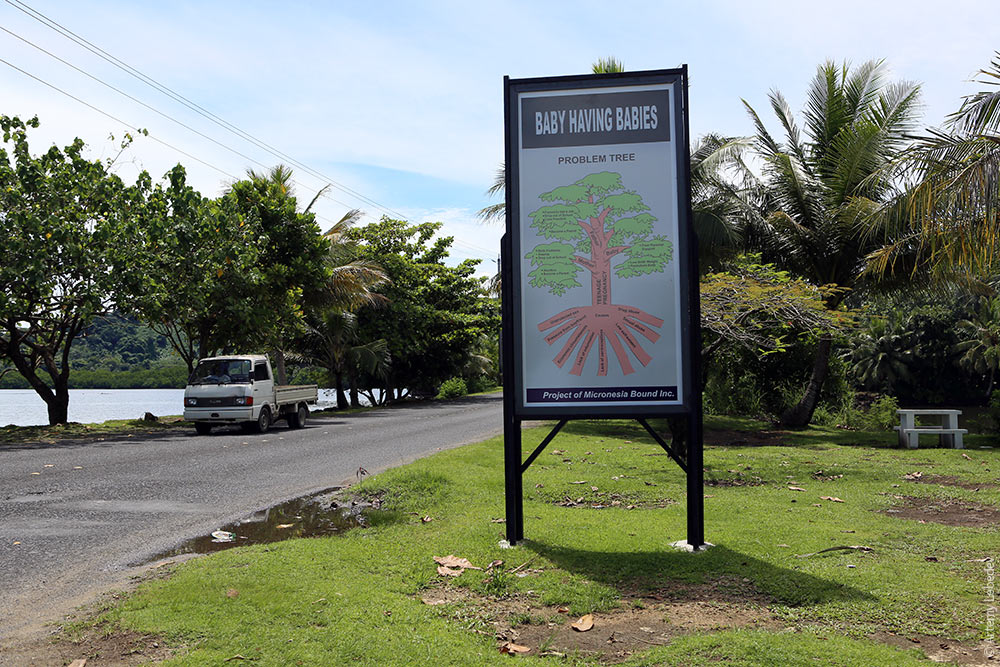 Chuuk StateMapThe entire island could have looked like this: 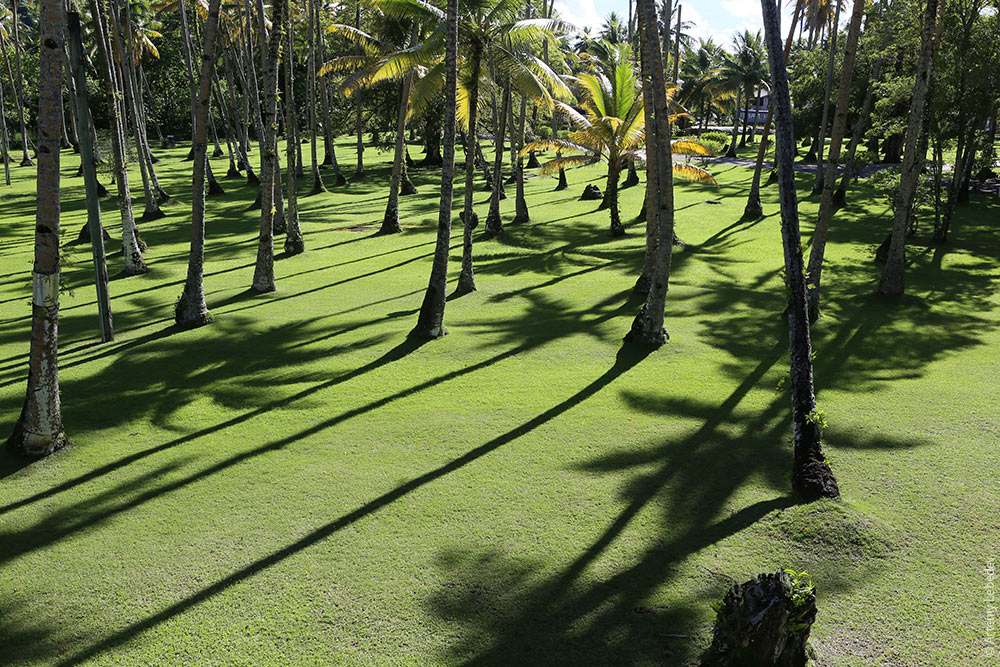 But its residents decided otherwise. So instead, the entire island looks like this: 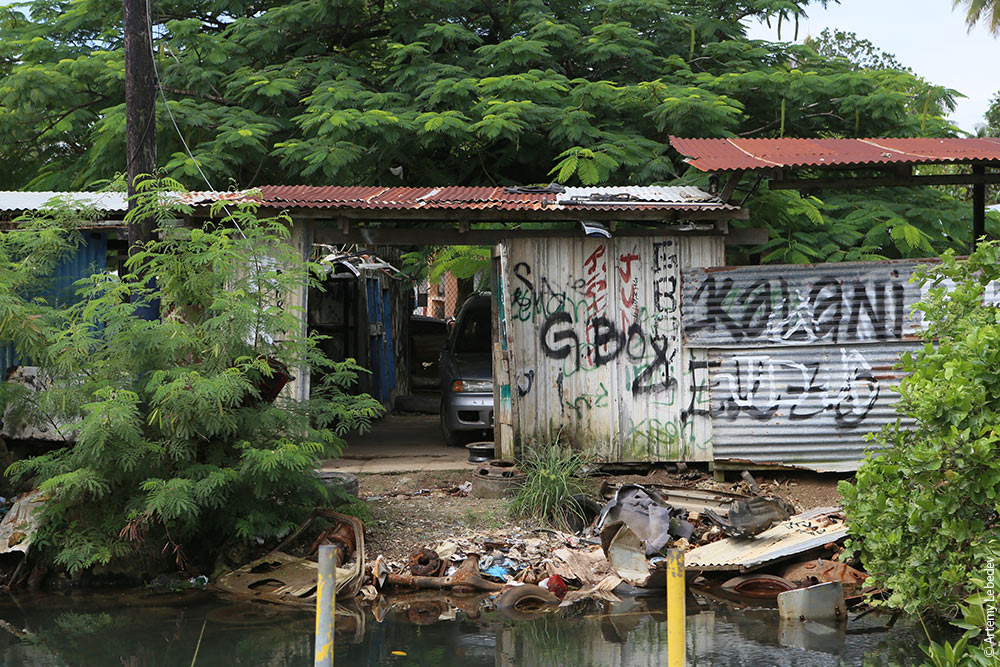 The main street. 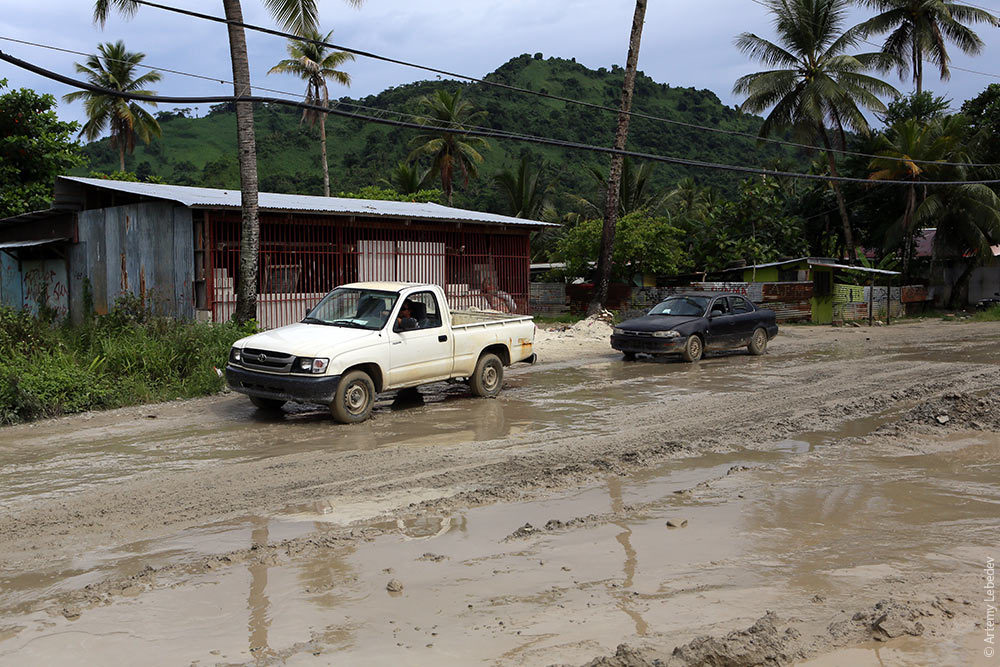 A store. 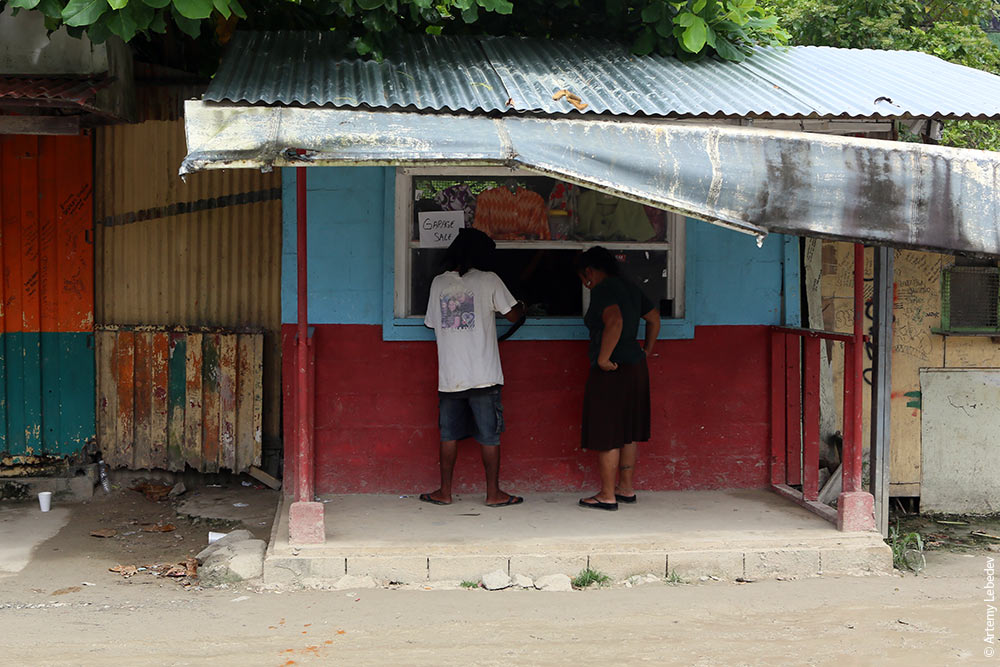 Another store. 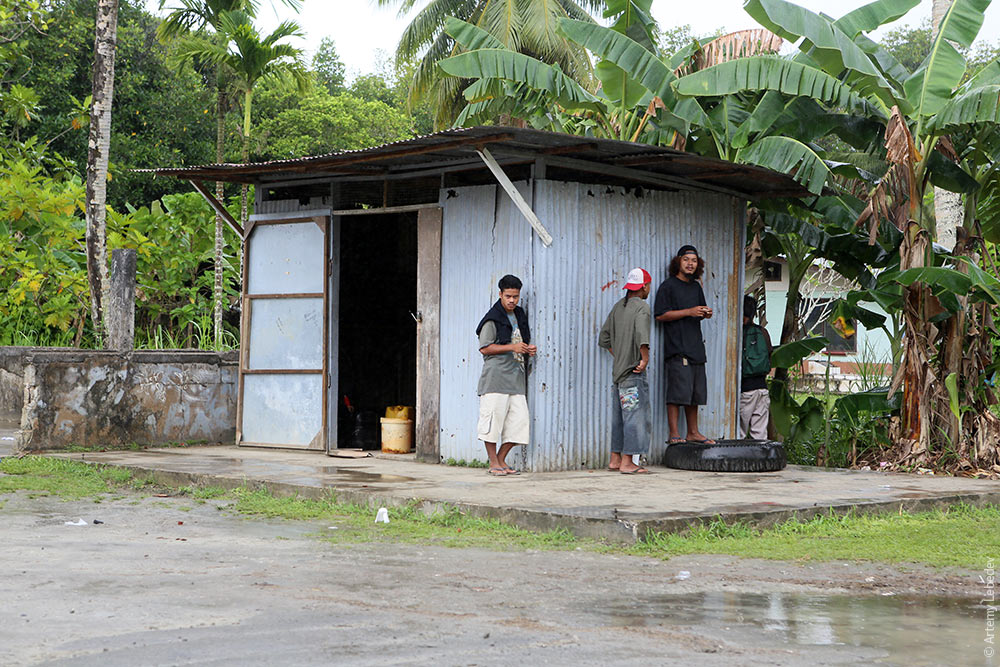 Public transportation. 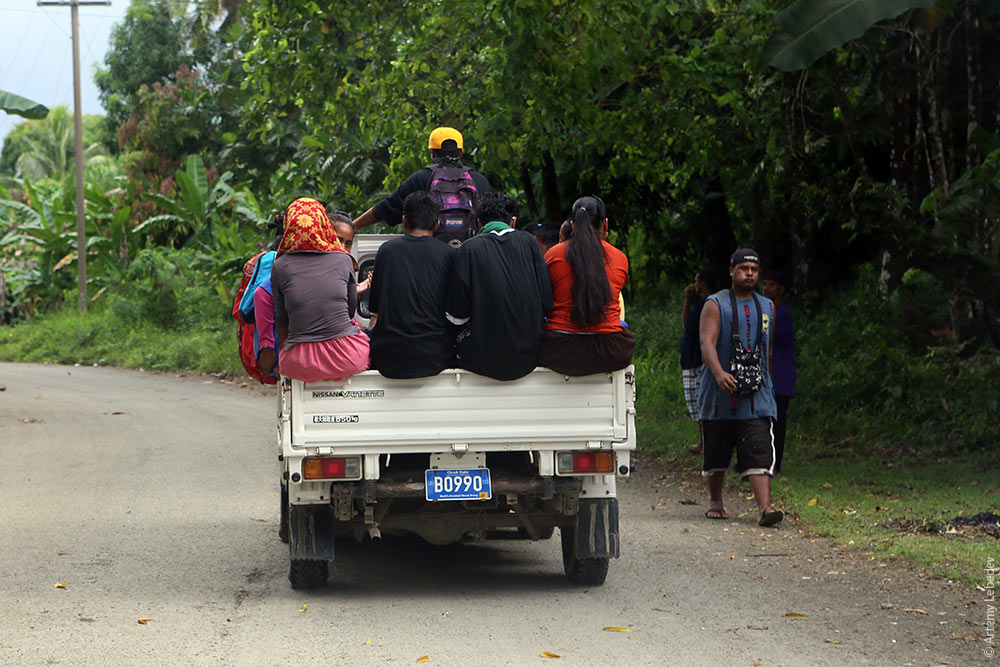 Chuuk is the best place in the world for wreck diving. I’m glad I put in the time to learn diving here, took the exam and got my certification. There’s an entire Japanese navy fleet from World War II at the bottom of its lagoon, as well as sunken airplanes, trucks, dinnerware, machinery, weapons—you name it. In fact, this is the only reason people come here. The island is notable not only for its sunken wreckage. There are broken-down, overgrown cars and machinery everywhere you look. 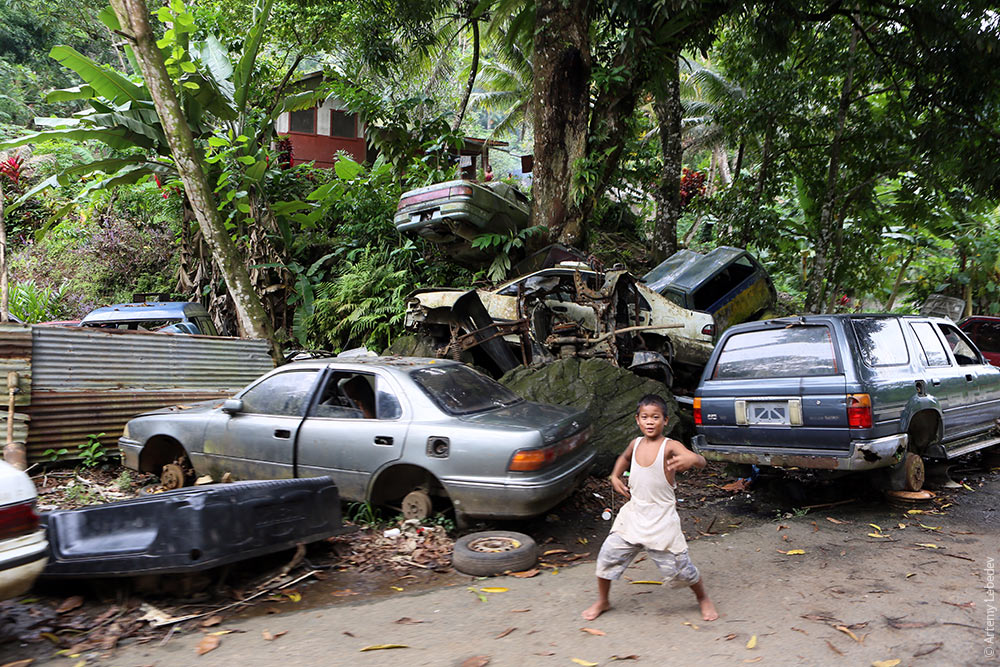 You can still make out the shape of the haul truck. 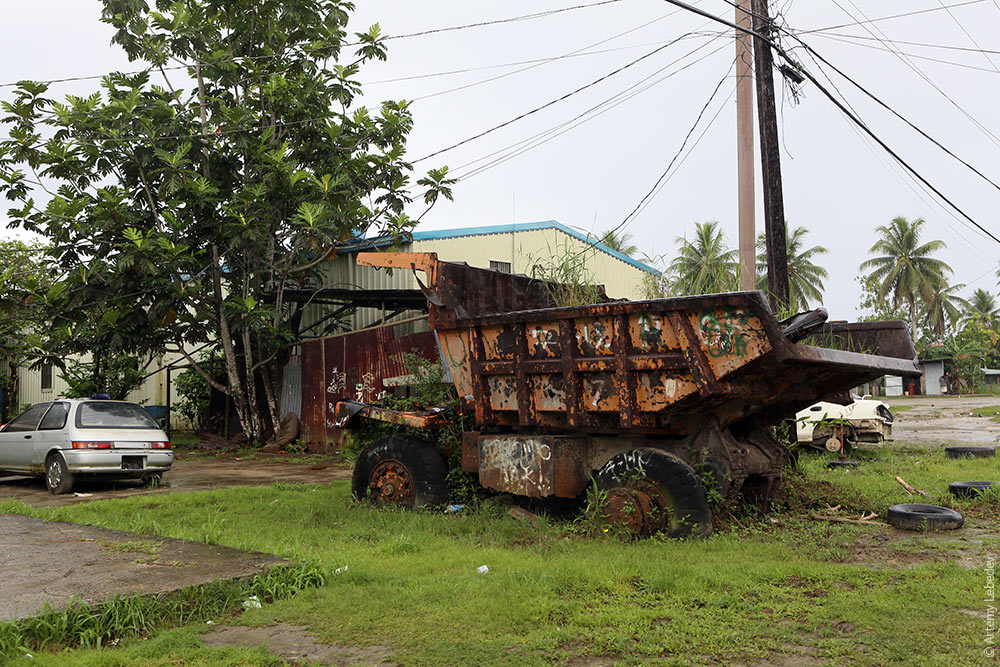 But the excavator is already hard to discern. 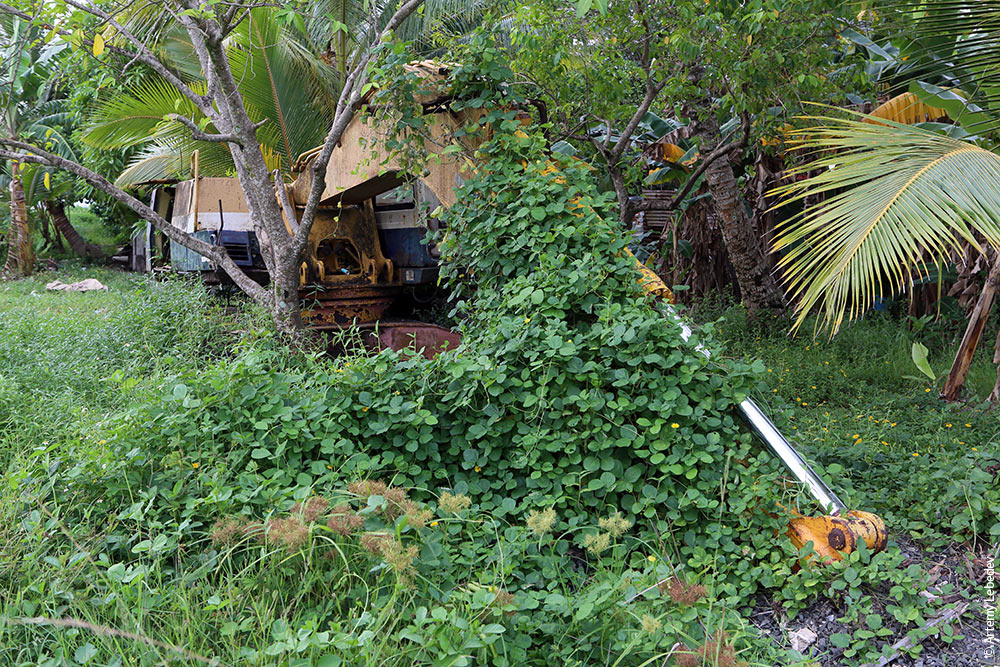 Family members are customarily buried in one’s back yard (like in Tuvalu or the Marshall Islands). 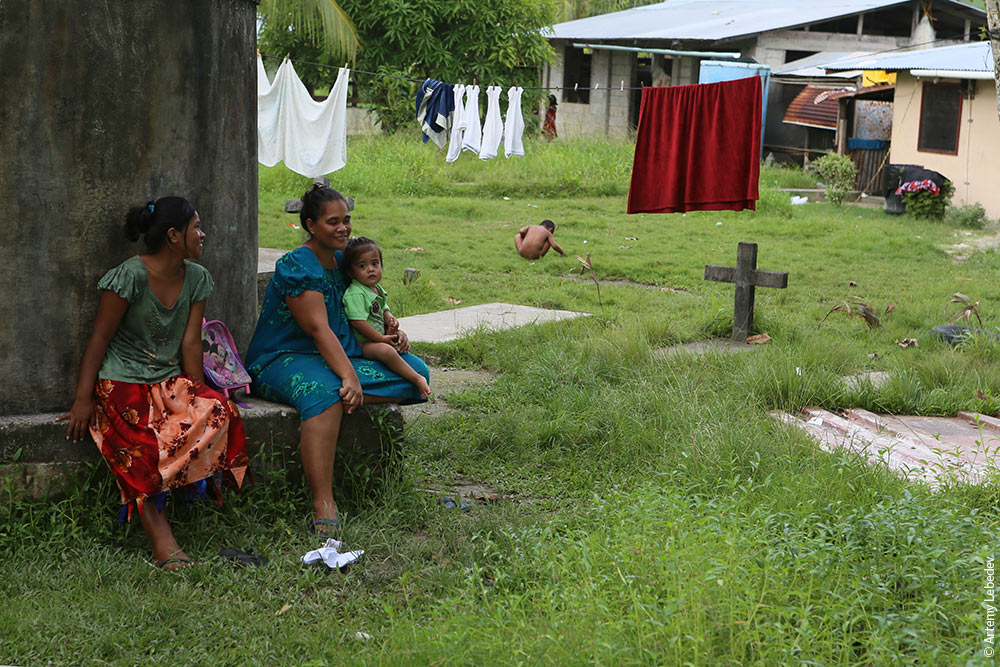 Playing on the graves is a favorite pastime for children. 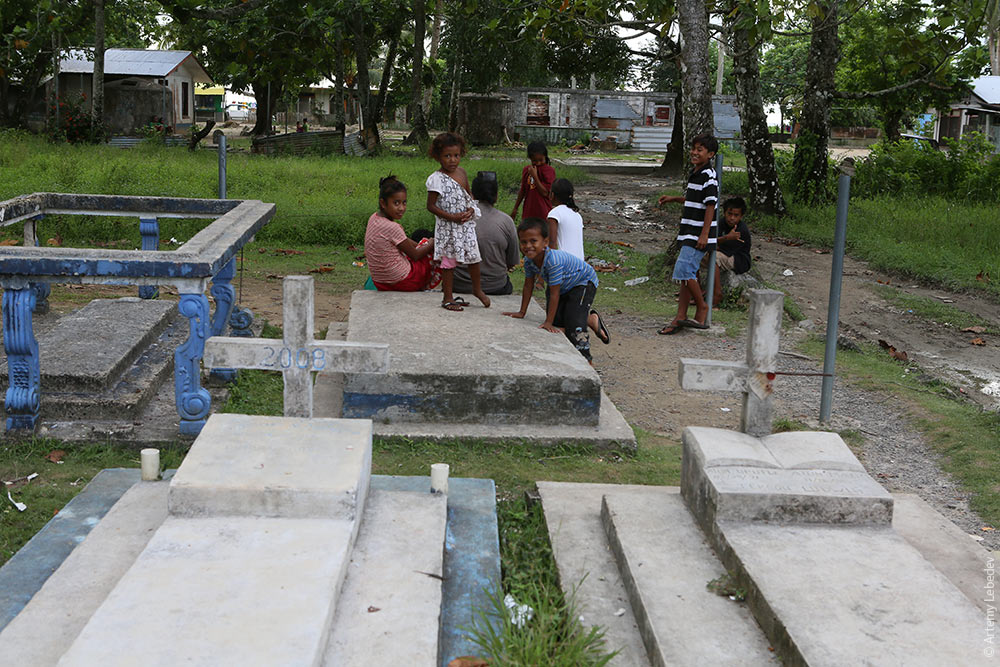 A fire hydrant. 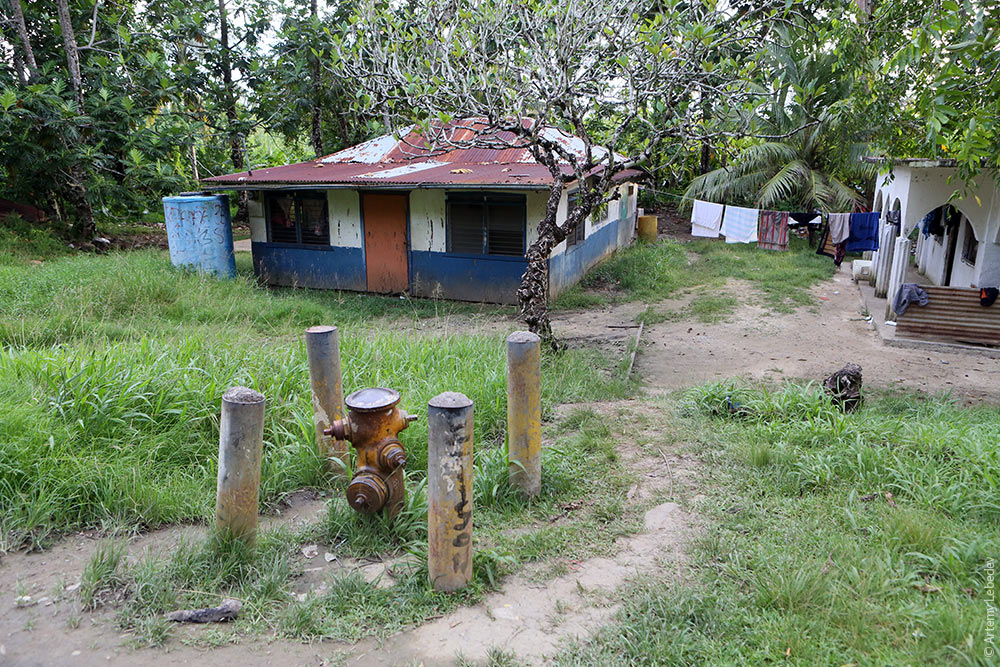 A local license plate. 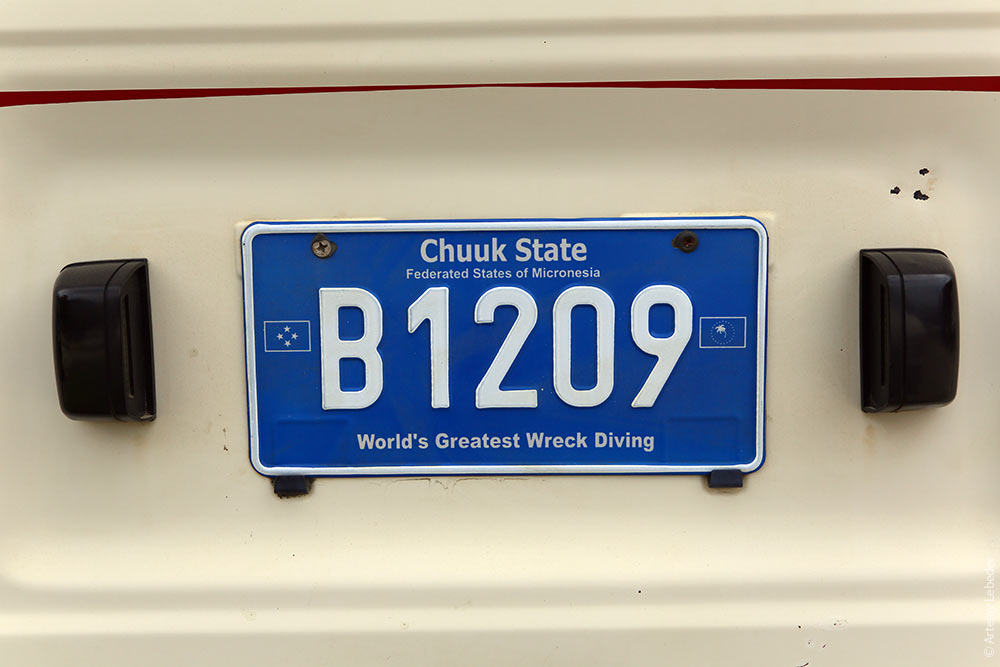 Only the state’s capital has shops. Residents of nearby islands come over to the supermarket by boat. 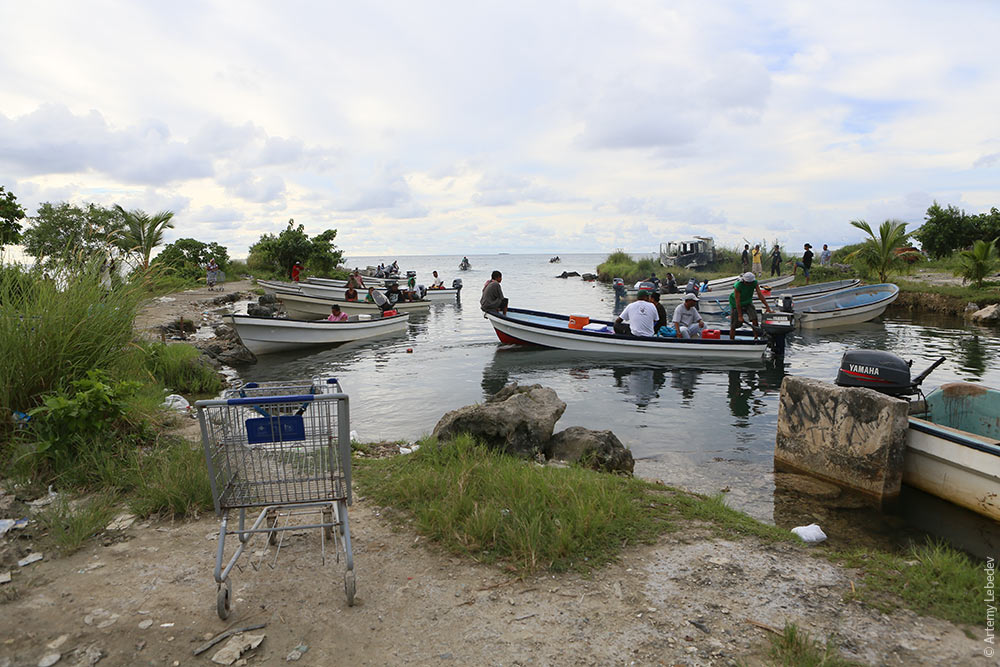 The locals are very good-natured, outgoing and friendly (their smiles are crooked because they’re trying to keep the betel from falling out of their mouth). 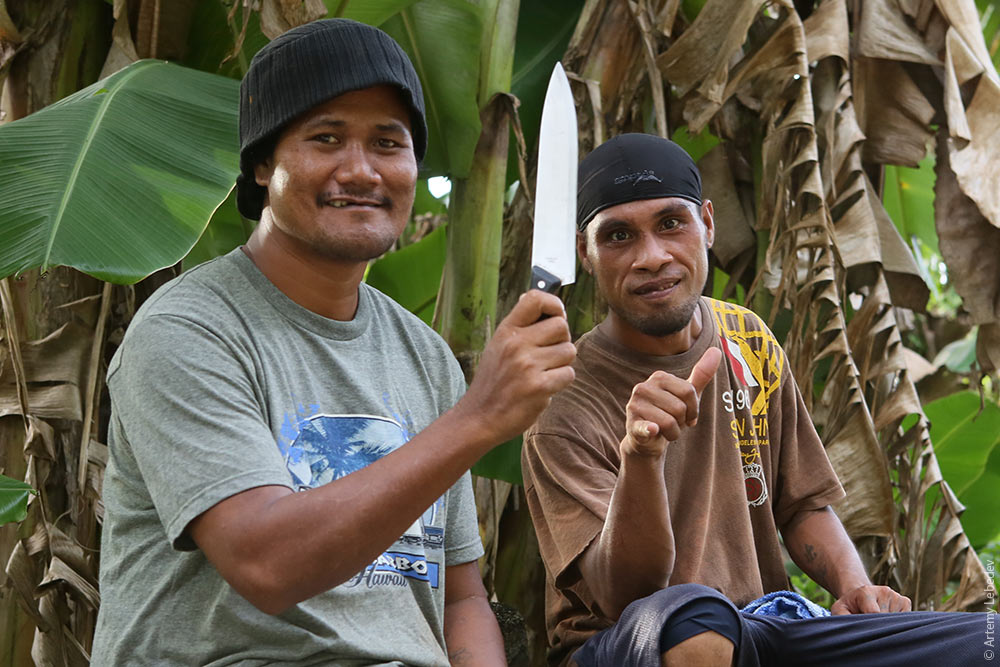 But it’s not a good idea to go out in the city at night: thugs and drunks come crawling out of every hole to terrorize random strangers. They might knife you, or sling a rock at your car. Chuuk is infamous throughout all of Micronesia for this. 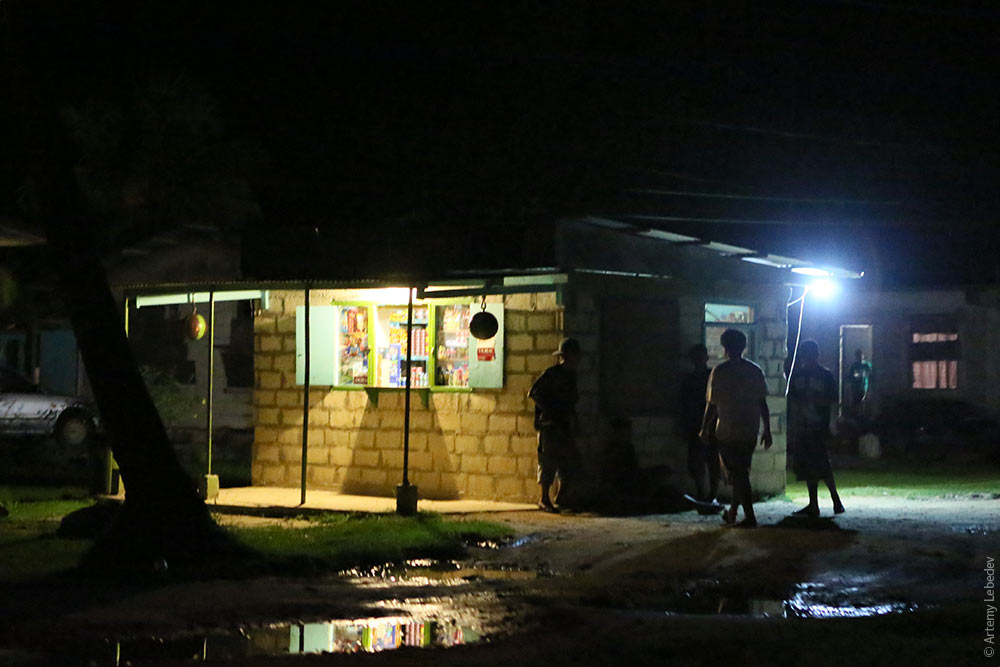 Yap StateMapThe most remote, infrequently visited, untouched Micronesian state. The Yapese value their ancient culture very highly, preserve it, and have absolutely no desire to westernize. 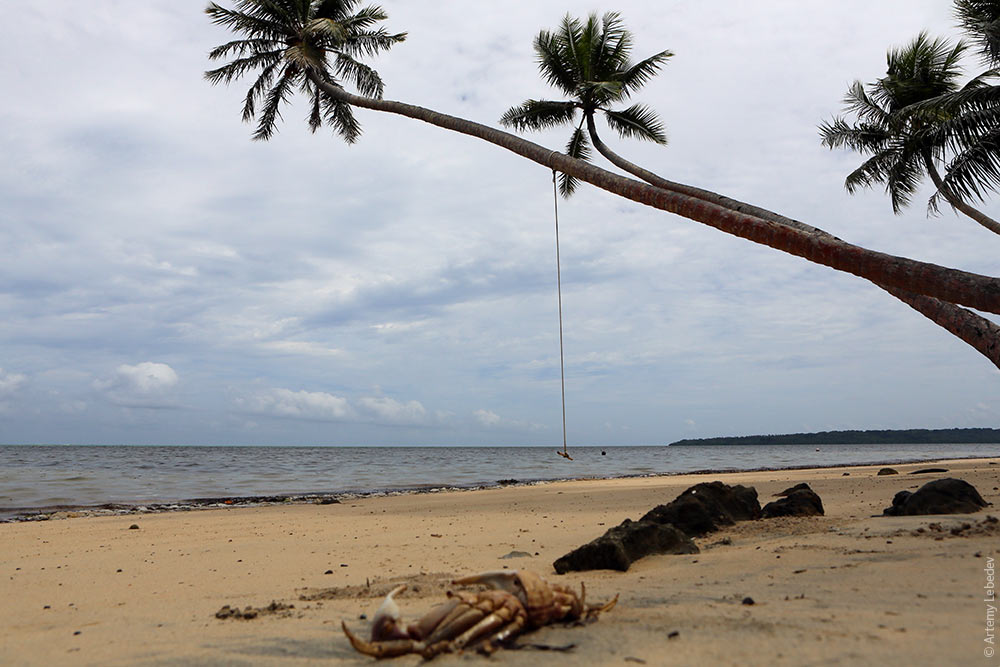 The jungles here have giant spider webs. 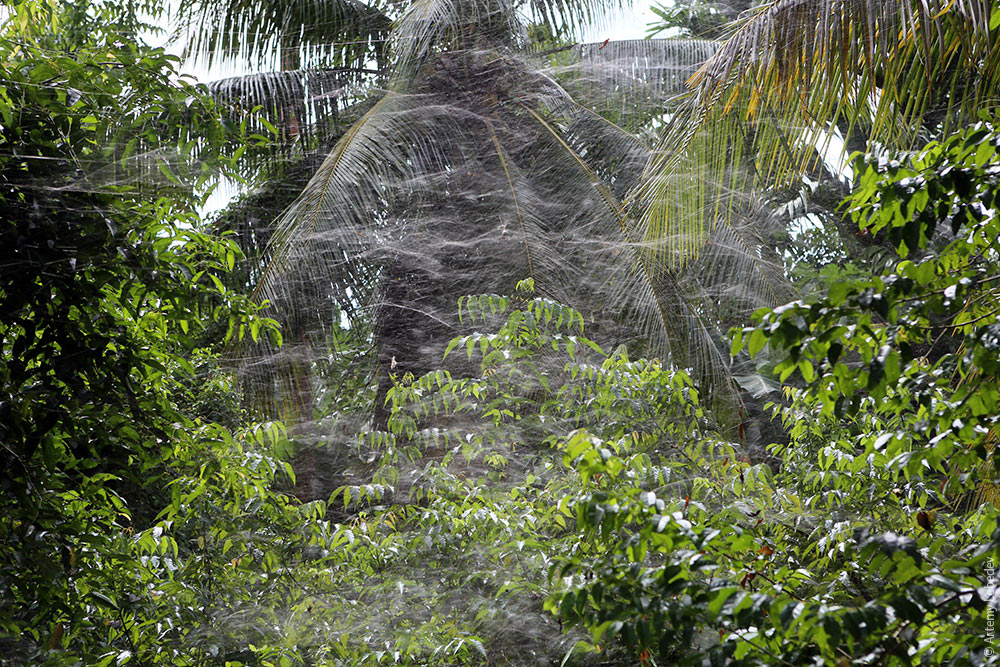 Mangrove forests protect the shores from storms. 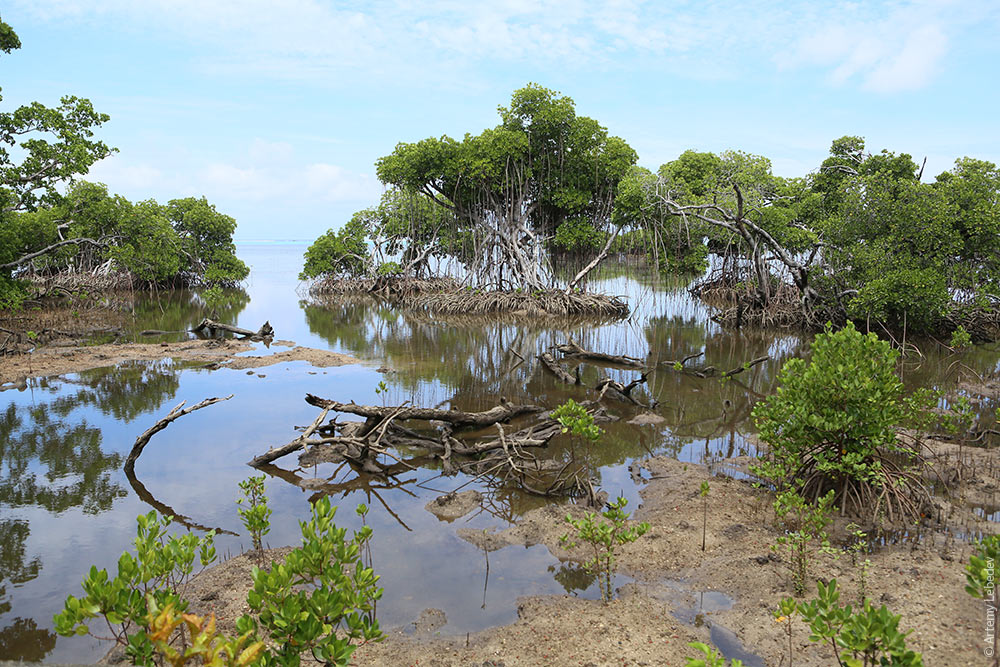 The island is strewn with remnants of planes which crashed during the war. 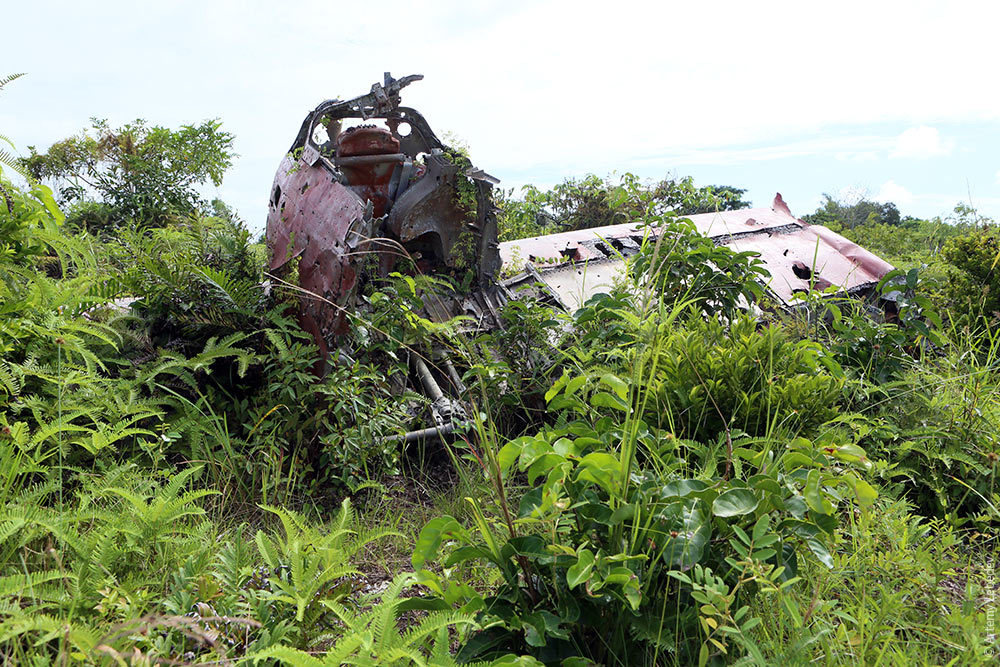 The “no passing” sign is shaped like a pennant, perhaps symbolizing the imperative to keep to the right. 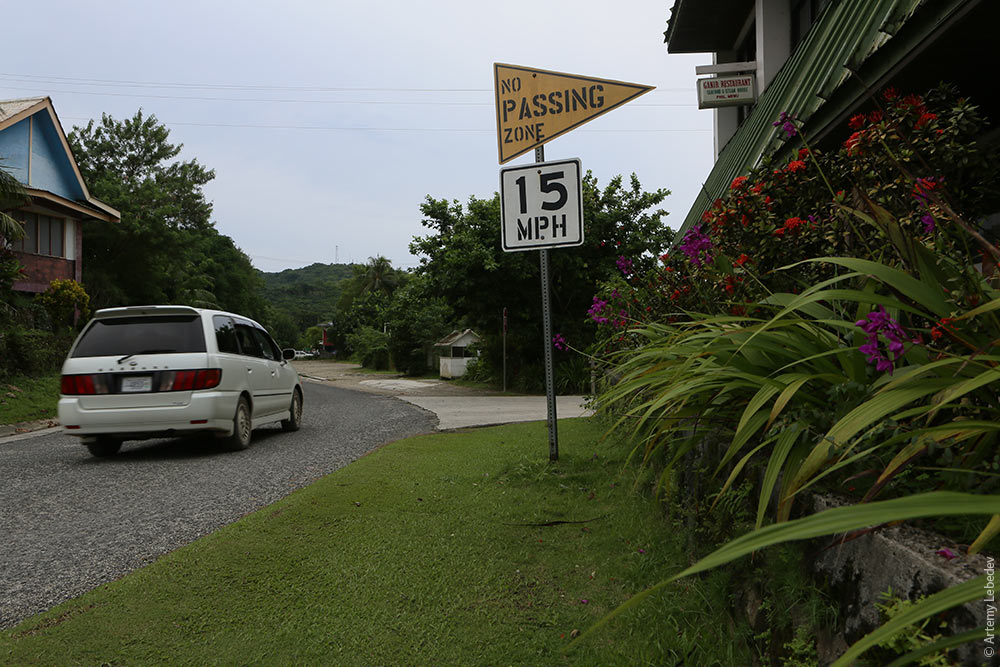 The hydrants and posts around them are painted a cheery green and red. 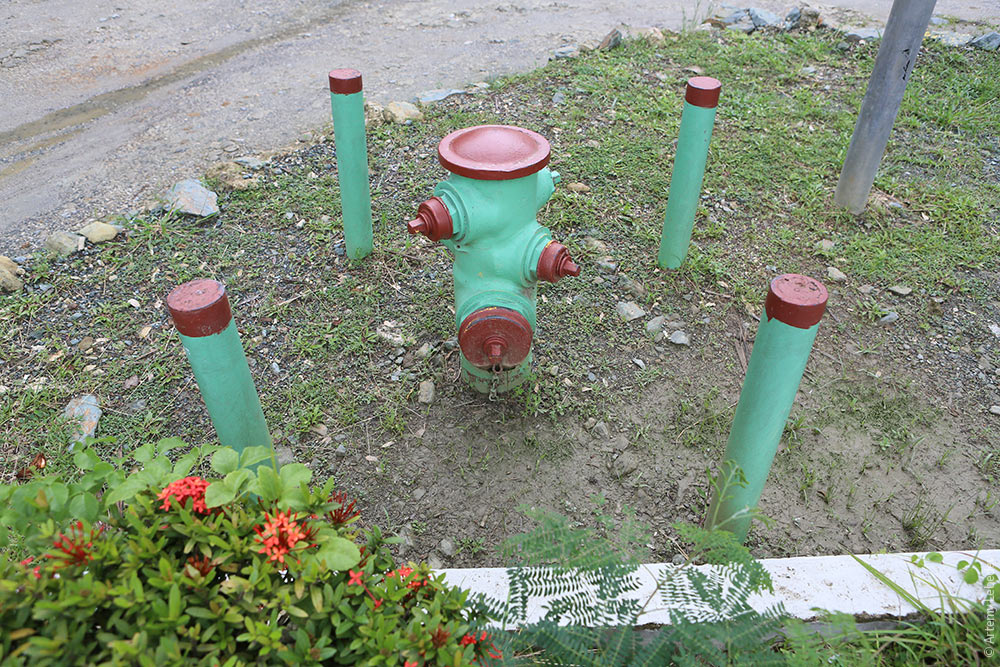 The state license plate. 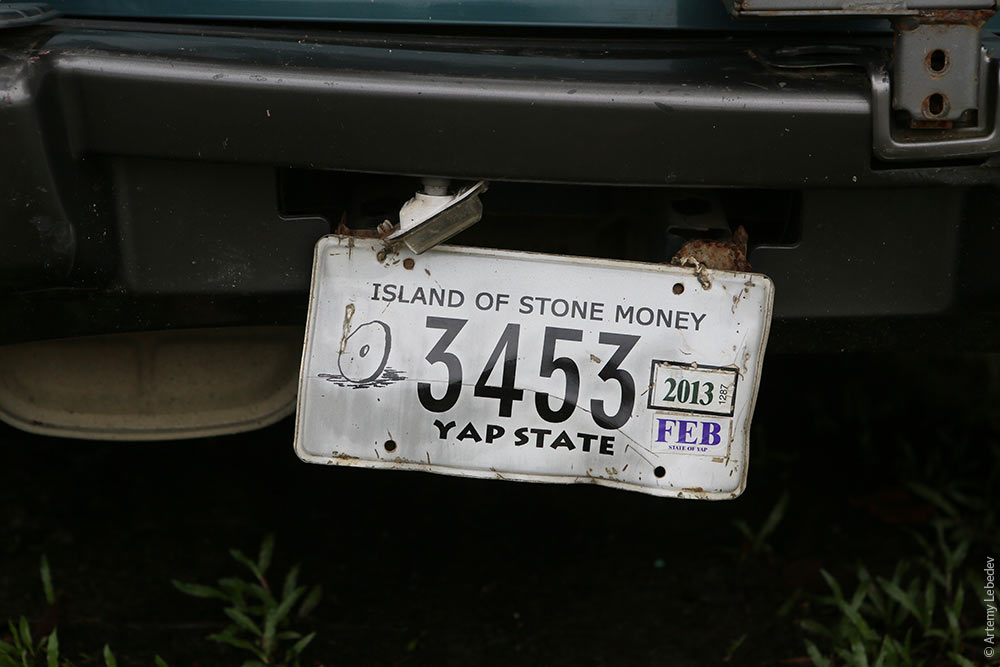 Old car tires are used as planters (like in Tonga or Zvezdny). 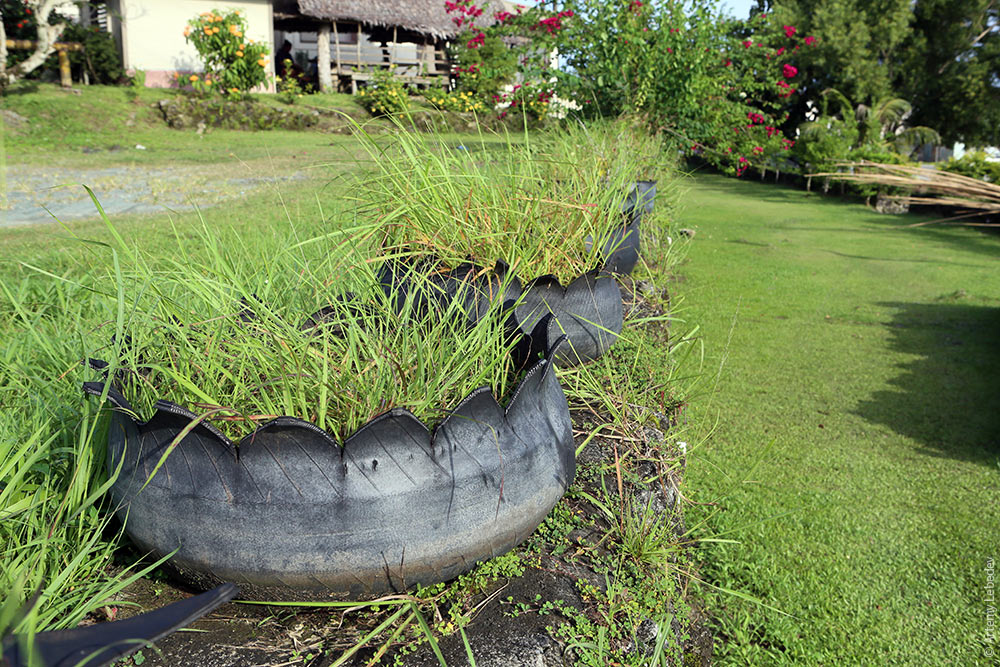 The Three Graces. 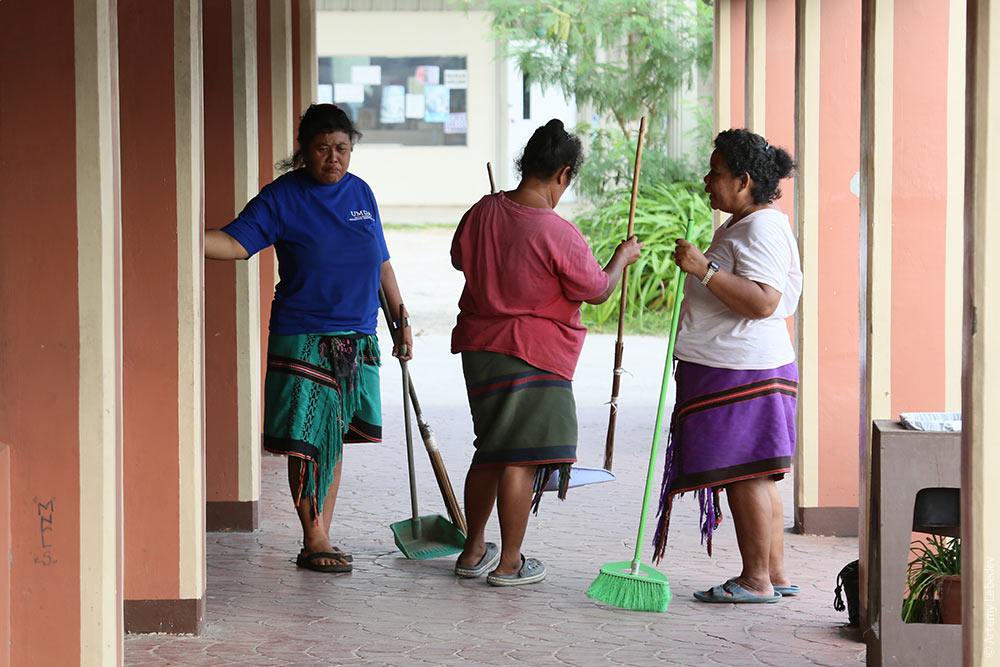 A saleswoman in a shop. 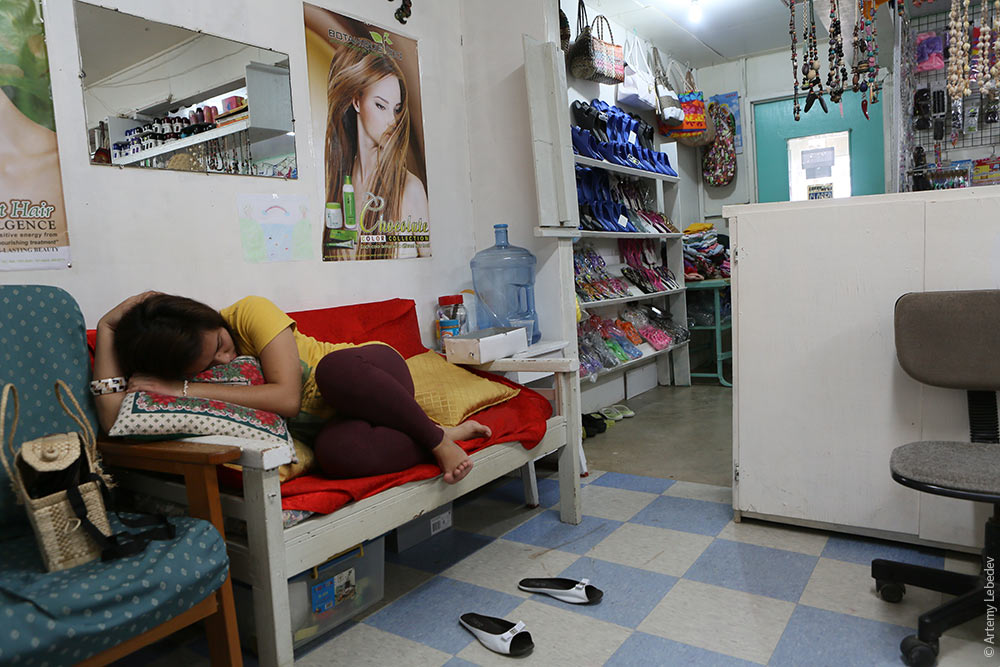 Oh yeah, so about that culture. In what other country in the world do women go to the supermarket topless? You won’t see this in Africa. Here, it’s common practice. 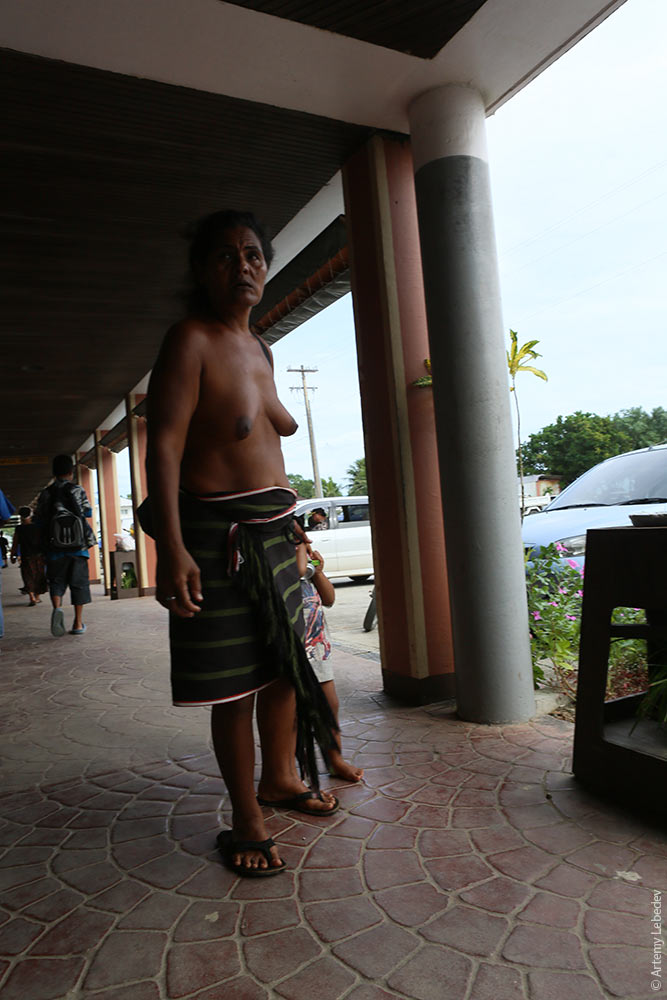 The Yapese love to sit on the floor. The scene: I walk out of my hotel room and see maids with their carts in the hallway as usual. Only here they’re sitting right on the carpet floor, chatting. People like to lean their back against something so that it doesn’t get tired. Flat rocks are stuck into the ground in public places expressly for this purpose. It looks like a cemetery, but is actually a row of extremely comfortable seats. 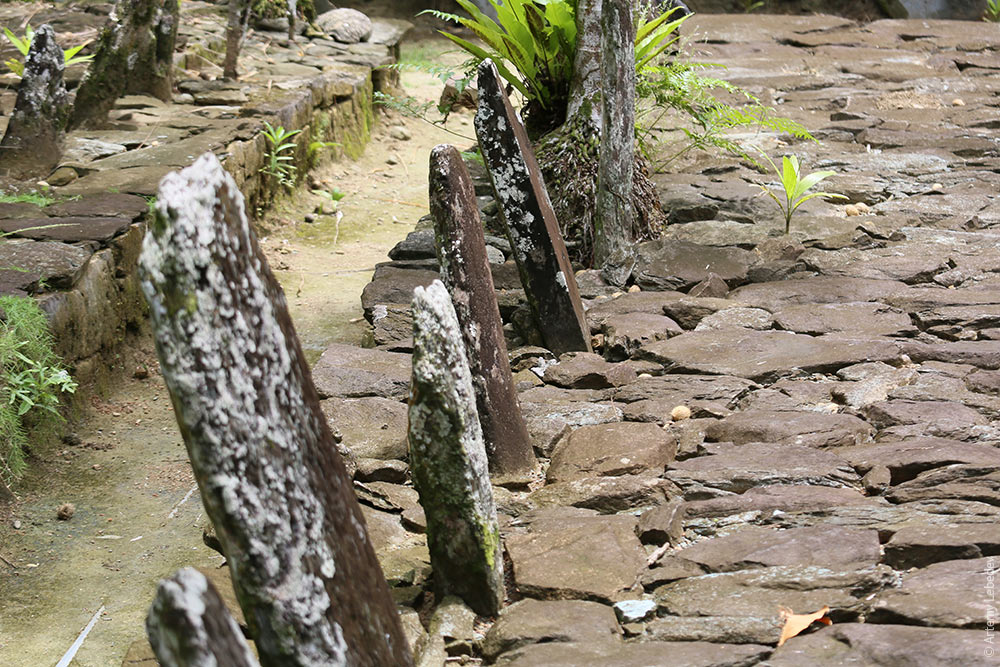 Yap’s most important historical heritage is its stone money. For some mysterious reason, about five hundred years ago the Yapese decided to start taking their boats over to Palau (that’s four hundred and seventy kilometers by sea, mind you), which has limestone (there’s none on Yap). Once there, they would make stone circles of various diameters with a hole in the middle, load them into their canoes, and take them back home. To this day, the island’s inhabitants value stone money higher than anything else. It can’t be stolen, of course—and not because some of the coins weigh a ton, but because the value of a coin lies first and foremost in its history: who brought it back, how many people died in the process of transporting it. All of this is a very important part of the local culture and folklore. Every last detail is known about every single coin. 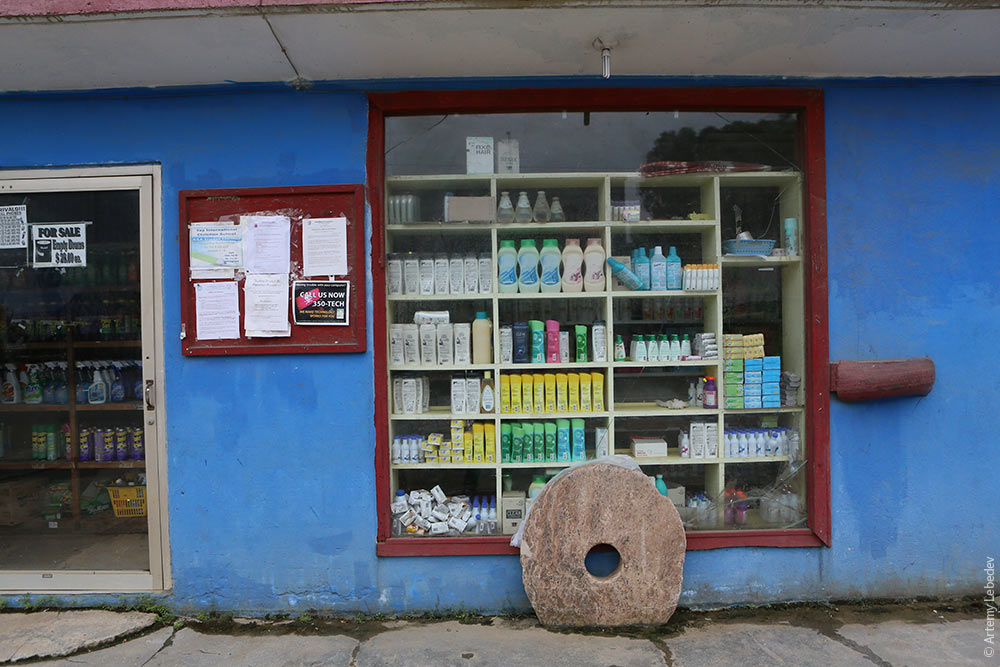 Stone money is usually displayed right outside people’s houses. It looks pretty, serves as a visual reminder of history, and makes for an occasion to brag. 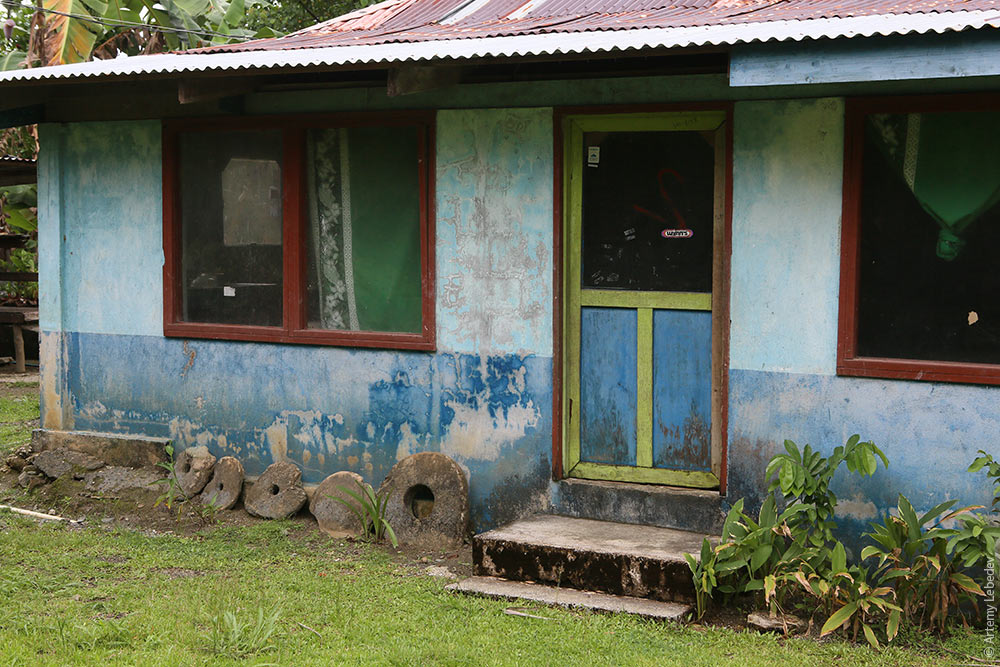 There are several stone money banks on the island. They were created primarily for tourists. Nevertheless, everyone knows exactly which family owns which coin. 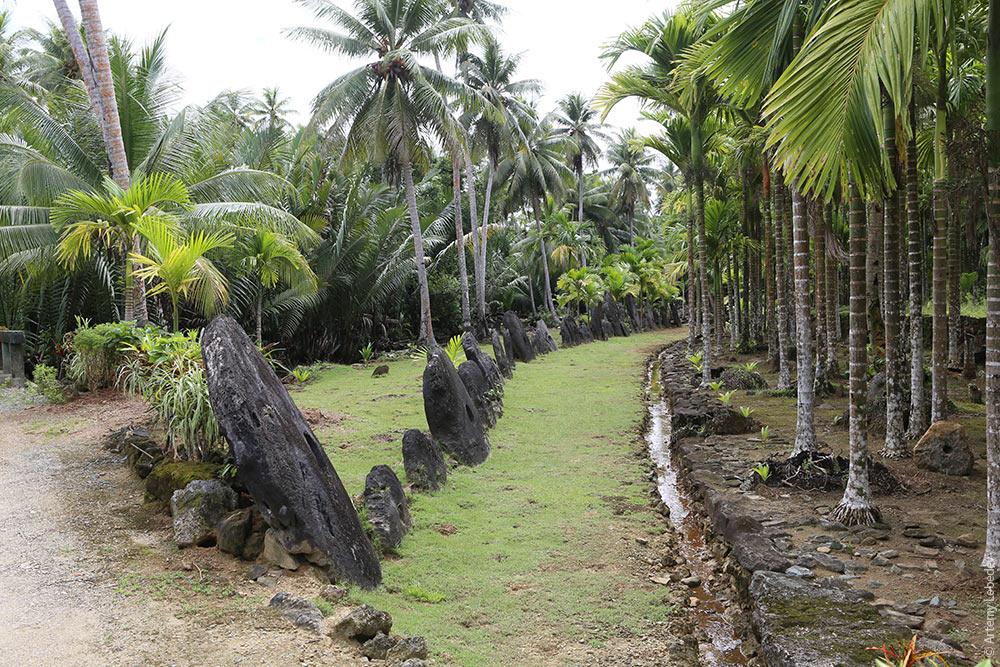 I asked if there was some sort of exchange rate, how many dollars it would take to buy one coin. The very serious answer I received was that the coins can’t be bought, and the price of each is a human life. Yapese customs hold more power than the country’s laws. If someone commits a very grave offense and must be punished by death according to the rules, the police have no right to interfere with the killing. The only thing that can save the poor wretch’s life is if someone in his family pays a stone coin for him. |